A TRIP TO THE MOON: The First Sci-Film Ever Is a Journey, Indeed
Science fiction is a vast and long-running genre that pushes our imaginations to the brink, taking us into imaginative worlds and futures. Space sagas like the Star Wars franchise make the universe seem even more vast. Groundbreaking dramas akin to The Matrix films examine humanity and our possible futures. Countless movies, TV shows, and books fall into this category, thrilling us with their stories. While it is nearly impossible to pinpoint the first ever science fiction story because, well, human imagination predates text and video, this genre does have a huge milestone movie. And, you can actually watch it on HBO Max (in color) as well as YouTube. The first ever sci-fi film, aptly titled A Trip to the Moon , is a silent, short, and very trippy ride, indeed.

A Trip to the Moon ‘s Ambitious Plot

A Trip to the Moon (French: Le Voyage dans la Lune ) is a 1902 short film by director and writer Georges Méliès. We will dig into his history and how this film came to fruition later. But let’s start things off with explaining what A Trip to the Moon is about. Astronomy Club president Professor Barbenfouillis proposes a trip to the moon to his colleagues. After some discussion, several of them (including the infamous Nostradamus) agree to go on the adventure.
They devise a plan to use a space capsule that is shaped like a bullet and shoot it out of a very large cannon straight into the moon. They accomplish their mission but not without hitting the Man in the Moon right in his eye. (We will talk about that shot later, too.) After arriving, they hop out of the capsule and explore this new surrounding. And boy do things get very sci-fi and odd. You have to see it to believe what is transpiring. The travelers make a few discoveries and have to make their way home to tell the world of their exploits. It is meant to be rather satirical in nature while also taking some digs at colonialism and imperialism.
Is A Trip to the Moon a bit creepy by today’s standards? Sure. Most silent films are quite theatrical and wonderfully strange to the modern eye. The wild costumes and jaunty music also amplify its odd factor. But the plot is incredibly ambitious for that time period and the first sci-fi film pulls it off quite well.
A Trip to the Moon ’s History, Inspirations, and Filming Challenges

Star Film Company/Lobster Films/Groupama-gan/Technicolor
Prior to this film, Méliès was an accomplished stage actor and illusionist with an eye for cinema. He began shooting his first films in 1896, setting standards by utilizing early versions of special effects like time-lapse photography and stop tricks. Méliès work would frequently dive into the strange and surreal while blending in his theater background, all of which certainly show up in A Trip to the Moon . The director affirmed that Jules Vernes’ novels From the Earth to the Moon (1865) and Around the Moon (1870) were major influences for the film’s overall storyline. The former book follows a club of weapons enthusiasts who want to build a massive gun to shoot people into space while the latter digs deeper into the aftermath of that effort. We get both of those narratives packed into this film.
A Trip to the Moon was a challenging feat for Méliès as his longest film at the time (approx. 8-12 minutes for various cuts) with a relatively large budget (10,000 Francs), lots of theater pomp, and special effects. He filmed it at his studio in Montreuil, Seine-Saint-Denis, which had a greenhouse-like setup that allowed him to take advantage of the natural light. In fact, a portion of the ceiling shows up in the film itself when the capsule is being built. There were color prints (done by hand, no less) of his film alongside black-and-white (by far the standard of that time), with the HBO Max version being in color. This version is a big deal because, for decades, the film could only be found in black and white.
During this time, actors were often anonymous but Méliès did play Professor Barbenfouillis. The film’s themes of discovery, exploration, and otherworldly adventure along with a strong emphasis on storytelling are why it is credited as the first science fiction film.
A Trip to the Moon : Scammers, Posers, Influence and the Film’s Legacy
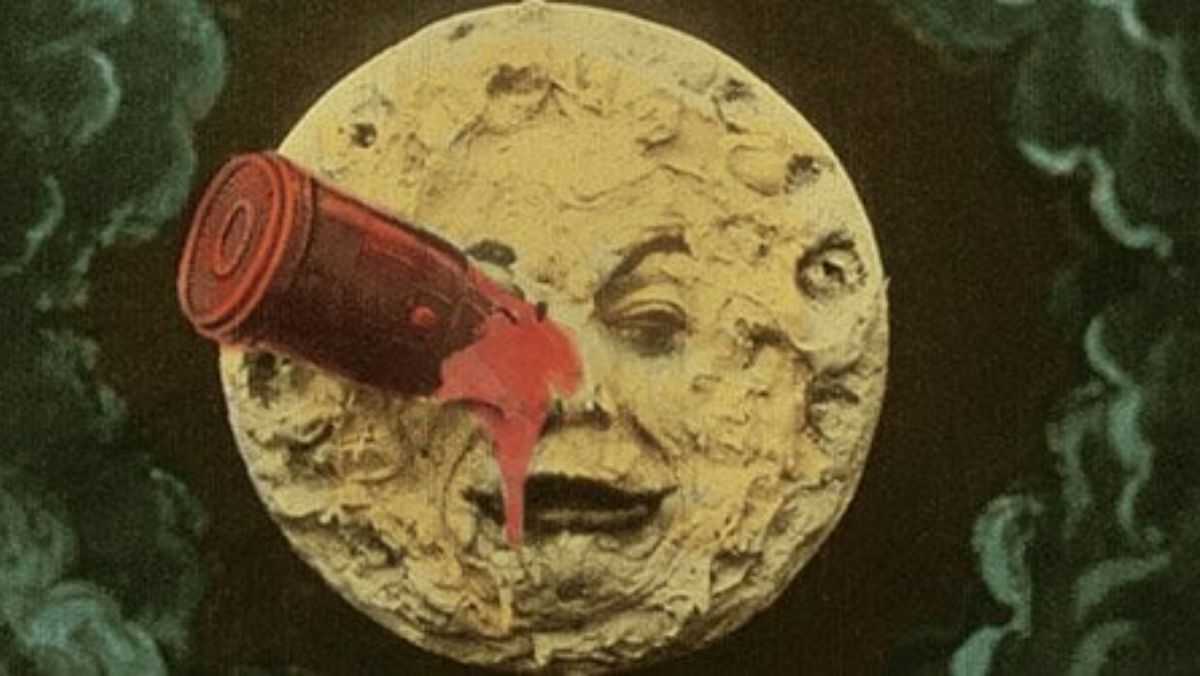
At the time of A Trip to the Moon ’s release, it stood out among its contemporaries with a strong, humorous story, sleek production, and iconic special effects. (Just imagine what it was like to experience it in person.) Its popularity went far beyond France and into the United States for several years following its release. A Trip to the Moon made others want to dive deeper into fantasy topics and bring them to audiences for pure fun. We love a satirical take. The concept of transferring science themes into live-action became a thrilling challenge for filmmakers. However, the problem with being original is that others will want to copy and capitalize off your success. And that’s exactly what people did
Siegmund Lubin released a very similar film, A Trip to Mars , the following year. Spanish director Segundo de Chomón basically did a “copy my paper but make it a lil different” with Excursion to the Moon in 1908. Aside from a few small changes, it is literally the same film. And, film pirating (who knew it was even a thing then?!) took over when it hit America. Companies like The Edison Manufacturing Company and Vitagraph distributed illegal copies , subsequently hurting Méliès’ profits. That’s right, Thomas Edison once again proves himself to be a Messy Marvin who lives for legal drama . It led to a legal fight that was hard for Méliès to control and eventually led to bankruptcy. (It is interesting that Thomas Edison died in 1931 while Méliès outlived him by seven years with a more delightful legacy in his wake.)
Interestingly, the first sci-fi film almost fell into obscurity following Méliès’ retirement but film enthusiasts resurrected interest in the 1930s. Since then, the film and its images—particularly the scene where the capsule lands in the eye of the Man in the Moon—continues to show up in pop culture. There are so many examples of the moon’s depiction as sentient and male that we cannot name them all. Around the World in Eighty Days (1956) rightfully paid homage to the first sci-fi film in its prologue. Rob Zombie’s film The Lords of Salem features this film in its background and Katy Perry’s 2012 Billboard Awards performance of “Wide Awake” pays homage.

A Trip to the Moon certainly resonates. While the inspiration may not be as direct, a legion of other works about space travel came in its wake. It’s safe to say that Star Wars , the Apollo franchise, and countless others owe their success to Méliès’ groundbreaking work.
So, if you have a quick 15-ish minutes to spare, dive into the first sci-fi film. It will make you marvel at how the human imagination continues to evolve.
YOU MIGHT ALSO LIKE...
- Privacy Policy
- Do Not Sell or Share My Information Opens in new tab
v2.08 – © Nerdist All Rights Reserved
The Legacy of ‘A Trip to the Moon’
We look at how the iconic Georges Méliès film inspired ripoffs, spoofs, a music video, and even movie piracy.
Published September 20, 2019 Movies By Christopher Campbell Disclaimer When you purchase through affiliate links on our site, we may earn a commission.
Arguably, cinema peaked immediately with the pure nonfiction works of the Lumière brothers and the fantastical films of Georges Méliès . The latter, a former stage illusionist, gave us hundreds of magical works that remain the obvious forebears of much of today’s genre cinema and special-effects spectacle.
His most famous film is the 1902 short A Trip to the Moon , which was inspired by the fictions of Jules Verne and H.G. Wells and depicts — as the title makes perfectly clear — a lunar mission. Its image of a rocket crashing into the eyes of an actor portraying the Man in the Moon is one of the most iconic in movies.
As such a significant work, despite not being the filmmaker’s first foray into Moon-based science fictions or even representing the lunar body anthropomorphically, A Trip to the Moon has been a huge influence on and inspiration to all kinds entertainments and practices over the course of nearly 120 years.
Here are the most notable movies, songs, and historical effects that comprise the legacy of A Trip to the Moon :
Film Piracy
Despite having made one (or more) of the most famous and iconic movies of all time, Méliès was ultimately not a financially successful filmmaker. Though he would continue producing motion pictures for another 20-plus years, A Trip to the Moon was a major loss for him and his company.
At the time, the film was his most ambitious and therefore most expensive. It was also his most popular, and he hoped to make a ton of money off its esteem. Unfortunately, while it was a huge hit in America, Méliès did not profit much from the export due to rampant film piracy.
Unlike the piracy that we have today, the theft of intellectual property in the early 1900s was done mostly by major businesses. The Edison Manufacturing Company, Vitagraph, Biograph, and others illegally made copies of A Trip to the Moon for distribution in the US through the years.
Méliès quickly set up an office in the States to stop the piracy of his films and secure American patents, but it was too late for many of his titles. And thanks to further bullying practices of Thomas Edison , the visionary French filmmaker was constantly losing money in the industry he helped pioneer.
Another way to get around paying for Méliès’ film — and this was something also done often back then — was to make your own. While Edison and others made copies of A Trip to the Moon by producing new negatives of prints they bought, Spanish director Segundo de Chomón copied the film by helming a nearly shot-for-shot remake.
Excursion to the Moon , released in 1908, has enough differences to not mistake it for the original — the face in the Moon, in particular, is a major giveaway, as is the way the rocketship crashes into its mouth rather than its eye — but it’s similar enough that as an unauthorized redo there’s definitely a case to make of its infringement. Watch it below.
It’s not as if Chomón was a hack. This practice was just the early 20th-century version of everyone making Star Wars ripoffs in the early ’80s. It’s just that Pathé wanted something nearly identical to the real thing and got the guy considered the Spanish Méliès to do it. It’s like if they got Douglas Trumbull, Stanley Donen, or Mike Hodges to make Star Wars wannabes. Oh right, that all happened.
The Music Video
Back in the ’80s and ’90s, music videos were the perfect bridge between film school and movie career, not just for the experience but also to show off familiarity with film history. For Jonathan Dayton and Valerie Faris, though they’d been out of school for many years, represent that transition very well with their 1996 video for Smashing Pumpkins’ “Tonight, Tonight.”
Originally, the couple had wanted to pay homage to Busby Berkeley musical numbers with their take on the song, but that had just been done in another video. So, inspired by the art on the album cover for Mellon Collie and the Infinite Sadness , on which the song appears, Dayton and Faris decided to pay tribute to Méliès with essentially a remake of A Trip to the Moon .
The video was a huge hit, winning many awards from MTV and earning a Grammy nomination, and through its heavy airplay introduced tons of viewers to such imagery as the iconic face in the moon, faces in stars, bouncing aliens, and bullet-like rocketship (though the humans — yes, those are SpongeBob SquarePants stars Tom Kenny and Jill Talley) arrive by space zeppelin.
The video concludes with a more elaborate underwater sequence than is found in A Trip to the Moon , however, clearly inspired more by Méliès’ The Mermaid and Under the Seas . Surprisingly, after Dayton and Faris became best known for the “Tonight, Tonight” video, the filmmaking duo did not go on to make sci-fi/fantasy films, but rather dramas such as Little Miss Sunshine .
The Reenactment
The same month as the debut of the “Tonight, Tonight” video saw the broadcast of the final part of HBO’s miniseries From Earth to the Moon , which chronicles the history of the Apollo program. Titled “Le Voyage Dans La Lune” (the French name for the film), this 12th installment of the program deals with the final trip to the Moon (Apollo 17) as well as the making of A Trip to the Moon .
Tom Hanks , who is one of the producers and the host of the series, appears in the Jonathan Mostow-helmed episode portraying a fictional assistant to Méliès (Tchéky Karyo) during the making of the famous sci-fi short. From Earth to the Moon painstakingly recreates the sets and costumes for a seamless cut between the real thing and the reenactment, so well that its goofy tone is excused.
https://youtu.be/6wdEnlOcqNA
Despite the interplay here and the belief that NASA’s original scientists were likely inspired by sci-fi literature, television, and cinema, there’s no direct connection between A Trip to the Moon and the actual trips to the Moon by American astronauts in the ’60s and ’70s. Even a known letter to NASA in the ’80s asking if their “splashdown” method of reentry was inspired by Méliès was shot down.
When you have a moment as iconic as the rocket in the eye bit of A Trip to the Moon , you’re bound to be paid homage and parodied up the wazoo. Indeed, there have been reworkings of the shot through the years in art and, most memorably, in cartoons. From 1999, Futurama has a funny gag in its second episode in which Bender sticks a beer bottle into the eye of a Moon-faced mascot.
A few years later, The Simpsons spoofed the same scene in the form of a violent Itchy & Scratchy short within the 13th season episode “Blame It on Lisa.” The mouse and cat are playing golf, and Itchy clubs Scratchy’s head clean off, knocking it all the way into the anthropomorphized Moon’s eye, a la A Trip to the Moon . “Now, that’s what I call a Moon shot,” the Man in the Moon says.
https://youtu.be/aVMJFCoCv_k
Eight years later, the show did it again. In the 21st season episode “Moe Letter Blues,” we see a black and white Itchy & Scratchy toon involving more of the Méliès film. Itchy plays a director making a sci-fi film that looks very similar to A Trip to the Moon . When Scratchy messes up the set, Itchy cuts his head off, inflates it to greater size then fires the rocketship into his eye. The end.
https://youtu.be/XEqBFV59PcM
The New Score
If you listened to Air ‘s perfect debut album Moon Safari back in the ’90s and thought, “Hey, these guys should score sci-fi movies,” you’d have been 20 years ahead of the curve. First, they had to go and score a drama about five teenage sisters first (nevertheless impressively), and then 12 years later they were tasked with creating a new score for a 109-year-old sci-fi short.
After a rare hand-colored print of A Trip to the Moon was discovered in 1993, plans for a restoration eventually were made by a collaboration between Lobster Films, the Groupama Gan Foundation for Cinema, and the Technicolor Foundation for Cinema Heritage. They recruited Air to compose new music for the reconstructed classic, released in 2011.
https://vimeo.com/39275260
As you can see and hear above, it’s a perfect match. It’s not as random as some electronic scores for old silent films out there, with the French duo adding sound effects and offering enough changes in the music to fit the different environments. The score makes A Trip to the Moon anew with the way Air’s layered soundscapes deliver tone to the film that wasn’t there before.
And if the 15-minute score wasn’t enough, AIr put out a whole new album based on the gig (titled Le Voyage Dans la Lune ), which is twice as long as the main composition and plays like an extended soundtrack to the short.
Tagged with: A Trip to the Moon Georges Melies The Simpsons Thomas Edison Tom Hanks
Christopher Campbell

- Filmsite Home
- About & Contact
- Privacy Policy
- Terms of Use
Copyright © 1996-2024 Filmsite LLC. All rights reserved.
Den of Geek
A Tribute to the First Ever Science Fiction Film: A Trip to the Moon
If you've never watched the George Melies silent film that launched an entire film genre, there's no time like the present.

- Share on Facebook (opens in a new tab)
- Share on Twitter (opens in a new tab)
- Share on Linkedin (opens in a new tab)
- Share on email (opens in a new tab)
Odds are you’ve seen the now-iconic shot of a rocket running into the eye of the Man in the Moon from George Méliès’ A Trip to the Moon, the 1902 French film that is considered the first science fiction film ever made. Perhaps you even caught more of Méliès’ work in Martin Scorsese ‘s 2011 film Hugo , which cast Méliès as a character, showed clips (in 3D, if you were lucky) from the silent film, and went about recreating the circumstances of the iconic film’s construction.
But maybe you haven’t seen the full 14-minute silent film (that’s 825 feet of film) for yourself. Frankly, the impact A Trip to the Moon had on early cinema — and, therefore, on modern cinema cannot be understated…
We take much of what constitutes the language of modern cinema for granted, but it wasn’t always so. There was a time when filmmakers hadn’t yet thought of using camera tricks to create illusions — what we know today as special effects. Enter French filmmaker George Méliès, a man in love with the art of illusion.
Méliès was more than a filmmaker of early cinema; he was a visionary. Charlie Chaplin called him an “alchemist of light,” while D.W. Griffiths claimed: “I owe him everything.” Terry Gilliam has called Méliès “the first great film magician.”
read more: Fall Movie Preview — Upcoming Films in 2019
Ad – content continues below
Prior to being a film magician, Méliès was a stage magician. He even had his own Parisian theater where he would stage magic shows (and later screen films). In 1895, he saw a presentation of the cinematograph — an early version of the film camera (and projector) — by the Lumières brothers, and set about learning the craft of film.
One day, a camera malfunction on one of Méliès films made it appear as if people were transforming into other people instantaneously. Really, the camera had jammed, stopping its recording for a short period of time and then restarting, thus creating what we think of today as a simple video special effect.
At the time, however, the effect — when purposely implemented — was revolutionary. Méliès’ mind immediately started churning, coming up with ideas of magical illusions he could work into his film narratives. The rest is literally film history.
A still from Melies’ “Man With a Rubber Head” — starring Méliès as the rubber head.
Méliès wasn’t just a film pioneer artistically, but also in terms of industry. He built the first movie studio in Europe — a building made completely of glass walls and ceilings on his own property outside of Paris. He was also the first filmmaker to use production sketches and storyboards, and would help paint the sets and create the props for his films.
Artistically, Méliès was the first filmmaker to experiment with double exposure, split screen, dissolve, superimposition, and reverse shots. He also experimented with moving the camera to create the illusion of objects changing size (a trick that was used to great effect in Man With a Rubber Head, < pictured above).
read more: The Must See Movies of 2019
Get the best of Den of Geek delivered right to your inbox!
Though Méliès created more than 500 films — in which he also often starred — A Trip to theMoon is his most famous. His longest to date at the time, the film drew inspiration from Jules Verne’s From the Earth to the Moon and its sequel Around the Moon , as well as H.G. Wells’ The First Men in the Moon , which was published just a year prior. A Trip to the Moon took three months to film and 10,000 francs to produce.
The plot of A Trip to the Moon is relatively simple, but incredibly ambitious for early cinema. It tells the story of Professor Barbenfouillis (played by Méliès), the president of the Astronomer’s Club. The professor and five of his astronomer friends take a trip to the moon via a space vehicle they build in their laboratory. They crash into the moon’s face. Once there, the men fall asleep, only to be captured by a group of moon aliens (played by real-life acrobats) known as the Selenites. They manage to escape with the Selenites in hot pursuit, falling back to Earth and landing in the ocean. Once pulled ashore, the returned explorers are celebrated the townspeople. Huzzah!
read more: Best Science Fiction Movies on Netflix Right Now
A Trip to the Moon not only made a splash (that’s a falling-in-the-ocean-from-the-moon reference) in France, but internationally, making Méliès famous in the U.S. It is considered one of the world’s first blockbusters, and was pirated by American film distributors such as Thomas Edison.
In addition to A Trip to the Moon Méliès would make many other epics that relied on his penchant for special effects, as well as his narrative ambition. These films spanned across genre, from documentaries and comedies to historical reconstructions (like a pre-enactment of the coronation of Edward VII) and fairy stories. That last one was Méliès’ best known genre, and wasn’t completely missing from A Trip to the Moon , which was just as much fantasy as it was science fiction.
read more: The Best Sci-Fi Movies on Hulu
Méliès was inducted into the Science Fiction Hall of Fame in 2015, with the museum noting that “unlike his contemporaries, [Méliès] very early saw film’s potential to show fantastical worlds in a way no other medium could,” and that “his elaborate and theatrical fantasies” were “some of the earliest depictions of other worlds on film.”
A few years ago, I had a chance to visit Paris’ La Cinematheque Francaise, the cinematic museum that Méliès would become the first conservator of later in his life. Amongst the museum’s prized posessions are props from A Trip to the Moon (pictured below), a tangible connection to film’s early history and a rather impressive reminder that Méliès was able to create magic literally out of pots and pans.
In his The Hugo Movie Companion , Scorcese wrote of Méliès and A Trip to the Moon :
Motion and emotion. They were, and are, at the core of cinema. And it was Georges Méliès who provided the final key: magic. He saw moving pictures as a way to enrich and enlarge his stage presentations. In so doing, he took the movies another giant step forward. The Lumières gave us the world as we knew it, and Méliès gave it to us as we imagined and extended it, with imaginary voyages, disappearances, and transformations.
Do yourself a favor: If you have 15 minutes during your lunch break or at the end of the day, take the chance to watch the first ever science fiction blockbuster, A Trip to the Moon , and try to imagine what it must have been like to see special effects like this for the first time. Let go of the cynicism of the modern cinematic era and embrace film for what George Méliès understood it to be: the art of magic.
Kayti Burt is a staff editor covering books, TV, movies, and fan culture at Den of Geek . Read more of her work here or follow her on Twitter @kaytiburt .
Read and download the Den of Geek SDCC 2019 Special Edition Magazine right here!

Kayti Burt | @kaytiburt
Kayti is a pop culture writer, editor, and full-time nerd who comes from a working class background. A member of the Television Critics Association, she specializes…
- Collections
- Support PDR
Search The Public Domain Review

Le Voyage Dans la Lune (1902)
Le Voyage Dans la Lune (Trip to the Moon, in English) is perhaps Georges Méliès ' most famous film, and is considered to be the first science fiction film in cinematic history. The 12 minute film follows a group of astronomers who travel to the Moon in a cannon-propelled capsule, explore the Moon's surface, escape from an underground group of native moon inhabitants (known as Selenites), and return to Earth with one of them as captive. While at once a spoof of more serious science fiction, the film can also be seen as a comment on France's colonial exploits (it was at the time the world's second largest colonial power). Méliès himself plays, as was his wont, the main role of the wonderfully named Professor Barbenfouillis. When asked in 1930, Méliès cited Jules Verne's From the Earth to the Moon and Around the Moon as the main influences for the film, but cinema historians have also mentioned the influence of Adolphe Dennery's stage adaption of Verne, and also H. G. Wells's The First Men in the Moon , a French translation of which was published only a few months before Méliès made the film. Jacques Offenbach's operetta Le voyage dans la lune (an unauthorized parody of Verne's novels) and also the "A Trip to the Moon" attraction at the 1901 Pan-American Exposition in Buffalo, New York, have also been talked of as being possible inspiration.
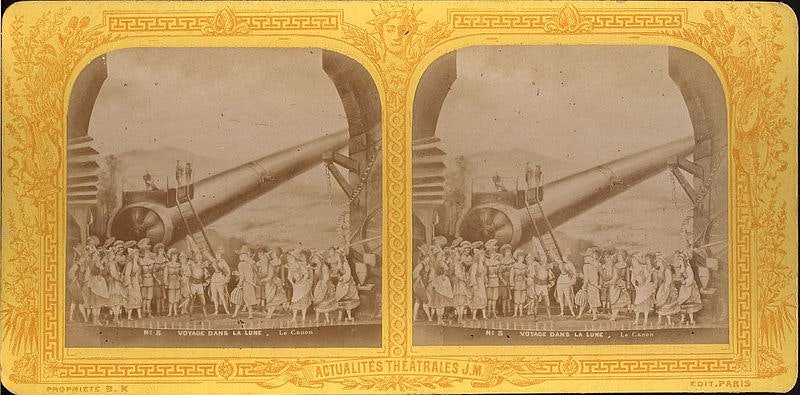
One in a set of twelve stereo cards showing scenes from Offenbach's 1875 operetta Le voyage dans la lune , circa 1885 — Source .
- Travel & Exploration
- The 'Other'
- Fantasy & Adventure
- 20th Century

Mar 1, 2016
If You Liked This…

Get Our Newsletter
Our latest content, your inbox, every fortnight

Prints for Your Walls
Explore our selection of fine art prints, all custom made to the highest standards, framed or unframed, and shipped to your door.
Start Exploring

{{ $localize("payment.title") }}
{{ $localize('payment.no_payment') }}
Pay by Credit Card
Pay with PayPal
{{ $localize('cart.summary') }}
Click for Delivery Estimates
Sorry, we cannot ship to P.O. Boxes.
The Enlightened Mindset
Exploring the World of Knowledge and Understanding
Welcome to the world's first fully AI generated website!
Exploring George Melies’ Trip to the Moon: A Retrospective on the Historical Impact of His Pioneering Film
By Happy Sharer

Introduction
In 1902, French filmmaker George Méliès released his iconic silent film, Trip to the Moon. This pioneering film was a milestone in the history of cinema, and its innovative techniques were revolutionary for the time. The purpose of this article is to explore George Méliès’ Trip to the Moon, examining its historical context, visual effects, narrative, and technological advances, as well as its critical reception and lasting impact on the development of cinema.
A Retrospective on George Méliès’ Trip to the Moon
Trip to the Moon was released in 1902, and was based on Jules Verne’s 1865 novel From the Earth to the Moon. It was the first science fiction film ever made, and was written, directed, edited, produced, and starred in by George Méliès. The film follows a group of astronomers who are determined to make a voyage to the moon, and the story culminates with their triumphant return to earth.
At the time of its release, Trip to the Moon was an instant success, and it quickly became an international sensation. It was praised for its innovative use of stop motion animation and special effects, and earned Méliès widespread acclaim. However, the film was soon forgotten, and it was not until the 1970s that it was rediscovered and recognized for its historical significance. In recent years, Trip to the Moon has been widely celebrated, and it is now regarded as one of the most influential films in cinematic history.
Exploring the Visual Effects of George Méliès’ Trip to the Moon
Trip to the Moon was groundbreaking in its use of special effects and stop motion animation. Méliès employed a variety of innovative techniques to create the illusion of movement, such as double exposure, multiple exposures, and superimposition. He also used painted backgrounds and props to create the desired effect. These techniques were revolutionary for the time, and they enabled Méliès to create some of the most memorable images in cinematic history.
Méliès also employed a number of innovative special effects, such as fireballs, smoke, and explosions, which he achieved by using pyrotechnics and dynamite. These effects enhanced the visuals of the film and added to its overall impact. The combination of these techniques and effects enabled Méliès to craft a truly unique and captivating viewing experience.
The Historical Significance of George Méliès’ Trip to the Moon
Trip to the Moon was a seminal work of cinema, and it had a profound impact on the development of filmmaking. Its innovative use of visual effects and special effects inspired many future filmmakers, and it served as a model for subsequent science fiction films. The film also demonstrated the potential of cinema as an art form, and it helped to usher in the era of “film as art”.
Trip to the Moon was also instrumental in advancing the technology of cinema. It showcased the possibilities of cinematography, and it paved the way for further advancements in the field. Méliès’ pioneering work provided an invaluable foundation for the evolution of cinema, and his legacy continues to be felt to this day.
Deconstructing the Narrative of George Méliès’ Trip to the Moon
Trip to the Moon is a whimsical and imaginative tale, and it is full of symbolism and allegory. The story follows a group of astronomers who are determined to make a voyage to the moon. Along the way, they encounter a variety of strange and mysterious creatures, from sea monsters to aliens. The journey culminates with their triumphant return to earth, where they are welcomed as heroes.
The themes and symbols in the film are open to interpretation, but some common interpretations include exploration, discovery, and the pursuit of knowledge. The film also serves as a commentary on the relationship between humans and nature, and it highlights the importance of embracing change and accepting the unknown. Ultimately, Trip to the Moon is a timeless tale of adventure and exploration.
Examining the Technological Advances in George Méliès’ Trip to the Moon
Trip to the Moon was a technological marvel for its time, and it featured a number of groundbreaking achievements in the field of cinematography. Méliès’ innovative use of visual effects and special effects enabled him to create some of the most iconic images in cinematic history. The film also showcased the potential of cinematography, and it helped to pave the way for further advancements in the field.
Méliès also employed a number of innovative techniques to create the illusion of movement, such as double exposure, multiple exposures, and superimposition. These techniques enabled Méliès to craft a truly unique and captivating viewing experience, and they remain influential to this day.
A Critical Review of George Méliès’ Trip to the Moon
Trip to the Moon was a groundbreaking achievement in the history of cinema, and it has continued to inspire filmmakers and audiences alike. The film is a timeless tale of adventure and exploration, and it is full of whimsy and imagination. Its innovative use of visual effects and special effects revolutionized the industry, and it provided an invaluable foundation for the evolution of cinema.
Trip to the Moon is a classic example of how cinema can be used to tell a captivating story, and its influence can still be felt to this day. It is a must-see for any fan of cinema, and it remains one of the most beloved films of all time.
George Méliès’ Trip to the Moon was a pioneering work of cinema, and it had a profound impact on the development of filmmaking. Its innovative use of visual effects and special effects revolutionized the industry, and its influence can still be felt to this day. The film is a timeless tale of adventure and exploration, and its legacy will continue to live on for generations to come.
(Note: Is this article not meeting your expectations? Do you have knowledge or insights to share? Unlock new opportunities and expand your reach by joining our authors team. Click Registration to join us and share your expertise with our readers.)
Hi, I'm Happy Sharer and I love sharing interesting and useful knowledge with others. I have a passion for learning and enjoy explaining complex concepts in a simple way.
Related Post
Exploring japan: a comprehensive guide for your memorable journey, your ultimate guide to packing for a perfect trip to hawaii, the ultimate packing checklist: essentials for a week-long work trip, leave a reply cancel reply.
Your email address will not be published. Required fields are marked *
Expert Guide: Removing Gel Nail Polish at Home Safely
Trading crypto in bull and bear markets: a comprehensive examination of the differences, making croatia travel arrangements, make their day extra special: celebrate with a customized cake.
The best free cultural &
educational media on the web
- Online Courses
- Certificates
- Degrees & Mini-Degrees
- Audio Books
A Trip to the Moon (1902): The First Great Sci-Fi Film"> A Trip to the Moon (1902): The First Great Sci-Fi Film
in Film , Literature , Sci Fi | January 19th, 2011 3 Comments
A year before the Wright brothers launched the first airplane flight in 1903, Georges Méliès , a French filmmaker with already 400 films to his credit, directed a film that visualized a much bigger human ambition – landing a spacecraft on the moon. Loosely based on works by Jules Vernes ( From the Earth to the Moon ) and H. G. Wells ( The First Men in the Moon ), A Trip to the Moon (Le voyage dans la lune) invented one of our favorite cinematic genres – the science fiction film. Today, many film critics consider Méliès’ short film an enduring classic. The Village Voice ranked it #84 on its list of the 100 Best Films of the 20th Century , and you’ll almost certainly recognize the iconic shot at the 4:44 mark.
Méliès’s body of work, which goes well beyond this landmark film, has been recently collected into a new box set. Georges Méliès: First Wizard of Cinema (1896–1913) puts 173 rare and rediscovered films onto a 5 disc, 13-hour collection.
A Trip to the Moon has been added to our collection of Free Movies Online . You can also download a version at the Internet Archive .
If you would like to sign up for Open Culture’s free email newsletter, please find it here . Or follow our posts on Threads , Facebook , BlueSky or Mastodon .
If you would like to support the mission of Open Culture, consider making a donation to our site . It’s hard to rely 100% on ads, and your contributions will help us continue providing the best free cultural and educational materials to learners everywhere. You can contribute through PayPal , Patreon , and Venmo (@openculture). Thanks!
Related Content:
The First Horror Film, George Méliès’ The Haunted Castle (1896)
Watch After the Ball , the 1897 “Adult” Film by Pioneering Director Georges Méliès (Almost NSFW)
Aelita: Queen of Mars (1924)" href="http://www.openculture.com/2015/06/watch-the-first-russian-science-fiction-film-aelita-queen-of-mars-1924.html" rel="bookmark">Watch the First Russian Science Fiction Film, Aelita: Queen of Mars (1924)
by OC | Permalink | Comments (3) |
Related posts:
Comments (3), 3 comments so far.
I was first introduced to this film, while I was at university. And I still love my professor for it :)
love this movie, too! did a score for the second half of it last year, if anyone is interested :) http://vimeo.com/16757866
Thank you for putting this classic film on here it’s great. Is this film “Le Voyage Dans la Lun” a public domain video? I would be very grateful for a reply as I would like to use it in an assignment for University if it is. Thank you for your time, Catherine Knight. 14/03/16
Add a comment
Leave a reply.
Name (required)
Email (required)
XHTML: You can use these tags: <a href="" title=""> <abbr title=""> <acronym title=""> <b> <blockquote cite=""> <cite> <code> <del datetime=""> <em> <i> <q cite=""> <s> <strike> <strong>
Click here to cancel reply.
- 1,700 Free Online Courses
- 200 Online Certificate Programs
- 100+ Online Degree & Mini-Degree Programs
- 1,150 Free Movies
- 1,000 Free Audio Books
- 150+ Best Podcasts
- 800 Free eBooks
- 200 Free Textbooks
- 300 Free Language Lessons
- 150 Free Business Courses
- Free K-12 Education
- Get Our Daily Email
Free Courses
- Art & Art History
- Classics/Ancient World
- Computer Science
- Data Science
- Engineering
- Environment
- Political Science
- Writing & Journalism
- All 1700 Free Courses
Receive our Daily Email
Free updates, get our daily email.
Get the best cultural and educational resources on the web curated for you in a daily email. We never spam. Unsubscribe at any time.
FOLLOW ON SOCIAL MEDIA
Free Movies
- 1150 Free Movies Online
- Free Film Noir
- Silent Films
- Documentaries
- Martial Arts/Kung Fu
- Free Hitchcock Films
- Free Charlie Chaplin
- Free John Wayne Movies
- Free Tarkovsky Films
- Free Dziga Vertov
- Free Oscar Winners
- Free Language Lessons
- All Languages
Free eBooks
- 700 Free eBooks
- Free Philosophy eBooks
- The Harvard Classics
- Philip K. Dick Stories
- Neil Gaiman Stories
- David Foster Wallace Stories & Essays
- Hemingway Stories
- Great Gatsby & Other Fitzgerald Novels
- HP Lovecraft
- Edgar Allan Poe
- Free Alice Munro Stories
- Jennifer Egan Stories
- George Saunders Stories
- Hunter S. Thompson Essays
- Joan Didion Essays
- Gabriel Garcia Marquez Stories
- David Sedaris Stories
- Stephen King
- Golden Age Comics
- Free Books by UC Press
- Life Changing Books
Free Audio Books
- 700 Free Audio Books
- Free Audio Books: Fiction
- Free Audio Books: Poetry
- Free Audio Books: Non-Fiction
Free Textbooks
- Free Physics Textbooks
- Free Computer Science Textbooks
- Free Math Textbooks
K-12 Resources
- Free Video Lessons
- Web Resources by Subject
- Quality YouTube Channels
- Teacher Resources
- All Free Kids Resources
Free Art & Images
- All Art Images & Books
- The Rijksmuseum
- Smithsonian
- The Guggenheim
- The National Gallery
- The Whitney
- LA County Museum
- Stanford University
- British Library
- Google Art Project
- French Revolution
- Getty Images
- Guggenheim Art Books
- Met Art Books
- Getty Art Books
- New York Public Library Maps
- Museum of New Zealand
- Smarthistory
- Coloring Books
- All Bach Organ Works
- All of Bach
- 80,000 Classical Music Scores
- Free Classical Music
- Live Classical Music
- 9,000 Grateful Dead Concerts
- Alan Lomax Blues & Folk Archive
Writing Tips
- William Zinsser
- Kurt Vonnegut
- Toni Morrison
- Margaret Atwood
- David Ogilvy
- Billy Wilder
- All posts by date
Personal Finance
- Open Personal Finance
- Amazon Kindle
- Architecture
- Artificial Intelligence
- Comics/Cartoons
- Current Affairs
- English Language
- Entrepreneurship
- Food & Drink
- Graduation Speech
- How to Learn for Free
- Internet Archive
- Language Lessons
- Most Popular
- Neuroscience
- Photography
- Pretty Much Pop
- Productivity
- UC Berkeley
- Uncategorized
- Video - Arts & Culture
- Video - Politics/Society
- Video - Science
- Video Games
Great Lectures
- Michel Foucault
- Sun Ra at UC Berkeley
- Richard Feynman
- Joseph Campbell
- Jorge Luis Borges
- Leonard Bernstein
- Richard Dawkins
- Buckminster Fuller
- Walter Kaufmann on Existentialism
- Jacques Lacan
- Roland Barthes
- Nobel Lectures by Writers
- Bertrand Russell
- Oxford Philosophy Lectures
Sign up for Newsletter
Open Culture scours the web for the best educational media. We find the free courses and audio books you need, the language lessons & educational videos you want, and plenty of enlightenment in between.
Great Recordings
- T.S. Eliot Reads Waste Land
- Sylvia Plath - Ariel
- Joyce Reads Ulysses
- Joyce - Finnegans Wake
- Patti Smith Reads Virginia Woolf
- Albert Einstein
- Charles Bukowski
- Bill Murray
- Fitzgerald Reads Shakespeare
- William Faulkner
- Flannery O'Connor
- Tolkien - The Hobbit
- Allen Ginsberg - Howl
- Dylan Thomas
- Anne Sexton
- John Cheever
- David Foster Wallace
Book Lists By
- Neil deGrasse Tyson
- Ernest Hemingway
- F. Scott Fitzgerald
- Allen Ginsberg
- Patti Smith
- Henry Miller
- Christopher Hitchens
- Joseph Brodsky
- Donald Barthelme
- David Bowie
- Samuel Beckett
- Art Garfunkel
- Marilyn Monroe
- Picks by Female Creatives
- Zadie Smith & Gary Shteyngart
- Lynda Barry
Favorite Movies
- Kurosawa's 100
- David Lynch
- Werner Herzog
- Woody Allen
- Wes Anderson
- Luis Buñuel
- Roger Ebert
- Susan Sontag
- Scorsese Foreign Films
- Philosophy Films
- September 2024
- August 2024
- February 2024
- January 2024
- December 2023
- November 2023
- October 2023
- September 2023
- August 2023
- February 2023
- January 2023
- December 2022
- November 2022
- October 2022
- September 2022
- August 2022
- February 2022
- January 2022
- December 2021
- November 2021
- October 2021
- September 2021
- August 2021
- February 2021
- January 2021
- December 2020
- November 2020
- October 2020
- September 2020
- August 2020
- February 2020
- January 2020
- December 2019
- November 2019
- October 2019
- September 2019
- August 2019
- February 2019
- January 2019
- December 2018
- November 2018
- October 2018
- September 2018
- August 2018
- February 2018
- January 2018
- December 2017
- November 2017
- October 2017
- September 2017
- August 2017
- February 2017
- January 2017
- December 2016
- November 2016
- October 2016
- September 2016
- August 2016
- February 2016
- January 2016
- December 2015
- November 2015
- October 2015
- September 2015
- August 2015
- February 2015
- January 2015
- December 2014
- November 2014
- October 2014
- September 2014
- August 2014
- February 2014
- January 2014
- December 2013
- November 2013
- October 2013
- September 2013
- August 2013
- February 2013
- January 2013
- December 2012
- November 2012
- October 2012
- September 2012
- August 2012
- February 2012
- January 2012
- December 2011
- November 2011
- October 2011
- September 2011
- August 2011
- February 2011
- January 2011
- December 2010
- November 2010
- October 2010
- September 2010
- August 2010
- February 2010
- January 2010
- December 2009
- November 2009
- October 2009
- September 2009
- August 2009
- February 2009
- January 2009
- December 2008
- November 2008
- October 2008
- September 2008
- August 2008
- February 2008
- January 2008
- December 2007
- November 2007
- October 2007
- September 2007
- August 2007
- February 2007
- January 2007
- December 2006
- November 2006
- October 2006
- September 2006
©2006-2024 Open Culture, LLC. All rights reserved.
- Advertise with Us
- Copyright Policy
- Privacy Policy
- Terms of Use
We need your support today
Independent journalism is more important than ever. Vox is here to explain this unprecedented election cycle and help you understand the larger stakes. We will break down where the candidates stand on major issues, from economic policy to immigration, foreign policy, criminal justice, and abortion. We’ll answer your biggest questions, and we’ll explain what matters — and why. This timely and essential task, however, is expensive to produce.
We rely on readers like you to fund our journalism. Will you support our work and become a Vox Member today?
How Georges Méliès’ films are still influencing cinema, more than 100 years later
The filmmaker’s spirit of adventure is the subject of a VR Google Doodle.
by Alissa Wilkinson

If you’ve ever watched a science fiction movie, or one that uses special effects, then you owe a debt of gratitude to Georges Méliès, the subject of today’s Google Doodle and one of the few people who truly deserve to be called a “visionary.”
One of cinema’s most important pioneers, Méliès worked in an age when the medium was changing rapidly and when the whole world was obsessed with scientific discovery, explorations, and expeditions to the furthest reaches of the planet. So it’s fitting that a Doodle created in another age of fast-paced cinematic change — our current time — honors him by using some fancy technology of its own.
Méliès, born in 1861, was an innovator par excellence, experimenting with effects in his films that blew people’s minds in an era when film itself was still startling to many people. Employing things like time-lapse photography, multiple exposures, dissolves, pyrotechnics, theatrical machinery, and more, he dazzled his audiences. It looked like magic. (You can see some of these effects on the Doodle’s background page .)
Méliès was working around the turn of the 20th century, a time of burgeoning scientific exploration and big dreams about the future of mankind. The filmmaker tapped into those through his experimentation with effects, and through stories he told tales of discovery.
Méliès’s most famous film is probably Le Voyage dans la Lune ( A Trip to the Moon ), from 1902. It’s a work of science fiction, inspired partly by stories by people like Jules Verne. In the almost 13-minute film, a group of space explorers travel to the moon, encounter a tribe of strange beings, capture one, and return to Earth. Méliès himself played the crew’s leader, Professor Barbenfouillis.
Méliès returned to that idea of being an explorer again and again in his movies, including 1904’s The Impossible Voyage , in which a group of explorers undertake an epic voyage to the center of the sun. And on May 3, 1912, Méliès released À la conquête du pôle (which translates to The Conquest of the Pole ). The full film is 44 minutes long, and it pokes sly fun at the then-recent South Pole explorations of Roald Amundsen, with effects that give the whole story a magical feel.
Inspired by Méliès’s yearning for discovery and fascination with exciting new technologies, Nexus Studios, the creators of the Doodle, decided to try their hand at one of today’s most interesting burgeoning cinematic technologies: virtual reality and immersive 360-degree video. Bringing those two effects together, they incorporated some of the filmmaker’s favorite trick photography moves — multiple exposures and disappearing subjects among them — to make a short film called Back to the Moon , in homage to Méliès’s 1902 movie.
To watch the film in its full virtual reality splendor, you’ll need a mobile device (or one of Google’s virtual reality devices ) and the Google Spotlight Stories app, available on Google Play or in the App Store .
Or you can watch it as a simple video below. If you click on the film as it plays, you can drag it around for the full 360-degree experience.
Most Popular
- Sign up for Vox’s daily newsletter
- The twisted political logic behind Trump’s attacks on Haitian immigrant
- The new followup to ChatGPT is scarily good at deception
- Biden and Harris say America’s no longer at war. Is that true?
- Take a mental break with the newest Vox crossword
Today, Explained
Understand the world with a daily explainer plus the most compelling stories of the day.
This is the title for the native ad
More in Culture

Please pay your respects to the new queen of TV killer thrillers.

The right thinks that hot girls can “kill woke.” What?

The truth behind the ongoing controversy over the highly memeable dancer.

The highly coveted endorsement comes after a year of paranoid speculation.

From prebiotic sodas to collagen waters, beverages are trying to do the most. Consumers are drinking it up.

Why the new luxury is flip phones and vinyl LPs
ARTS & CULTURE
A trip to the moon as you’ve never seen it before.
One of the landmark films in cinema can now be seen in color
/https://tf-cmsv2-smithsonianmag-media.s3.amazonaws.com/accounts/headshot/daniel-eagan-240.jpg)
Daniel Eagan
/https://tf-cmsv2-smithsonianmag-media.s3.amazonaws.com/filer/20110902104008The-Moon-by-Melies-small.jpg)
It’s one of the most famous films in cinema, a special-effects, science-fiction extravaganza that became an international sensation when it was released in 1902. Almost instantly it was pirated, bootlegged, copied and released by competing studios under different names. And for decades it’s only been available in black-and-white copies.
Now, after a 12 year project that approached a half-million euros in cost, Lobster Films , The Technicolor Foundation for Cinema Heritage , and Fondation Groupama Gan pour le Cinéma are unveiling a new version of A Trip to the Moon , “resurrected,” in the words of preservationist Tom Burton, from an original, hand-colored nitrate print. For the first time in generations viewers will be able to see the color version of the film that stunned early 20th-century moviegoers.
Le voyage dans la lune , to use its French title, is one of over 500 movies made by Georges Méliès, perhaps the first filmmaker to fully grasp the potential of cinema. The son of a wealthy shoemaker, Méliès was born in 1861. Fascinated by magic and illusions, he left the family business in 1888. Buying the Robert-Houdin theater from his widow in Paris, he developed a successful act with illusions such as “The Vanishing Lady.” Méliès was in the audience when the Lumière brothers held their first public film screening on December 28, 1895, and within months was exhibiting movies at his theater.
Méliès made his first film in November, 1896, built his own studio in 1901 and formed the Star Film brand to market his work in France and internationally. He made movies about current events and fairy tales, replicated his stage illusions on screen and developed a highly advanced technical style that incorporated stop-motion animation: double-, triple-, and quadruple-exposures; cross-dissolves; and jump cuts. More than any of his contemporaries, Méliès made movies that were fun and exciting. They were filled with stunts, tricks, jokes, dancing girls, elaborate sets and hints of the macabre.
A Trip to the Moon had several antecedents, including the 1865 novel From the Earth to the Moon by Jules Verne and A Trip to the Moon , a four-act opera with music by Jacques Offenbach that debuted in 1877. Méliès may also have been aware of a theater show at the 1901 Pan-American Exhibition in Buffalo, New York, called A Trip to the Moon . Filming started in May, 1902. It was released on September 1 in Paris and a little over a month later in New York City.
At the time exhibitors and individuals could purchase films outright from the Star Films catalog. Color prints were available at an extra cost. Probably not too many color prints of A Trip to the Moon were ever in existence, but it came out right around that time color became a real fad. Within a couple of years, the hand-painting was replaced by tinting and stencil process, so color became more prevalent and less expensive. Several color Méliès films survive, but it was believed that the color Trip to the Moon had long been lost.
But in 1993, Serge Bromberg and Eric Lange of Lobster Films obtained an original nitrate print from the Filmoteca de Catalunya . The only problem: it had decomposed into the equivalent of a solid hockey puck. In 1999, Bromberg and Lange, two of the most indefatigable of all film historians, began to try to unspool the reel by placing it in the equivalent of a humidor, using a chemical compound that softened the nitrate enough to digitally document individual frames. (The process also ultimately destroyed the film.)
Years later, Bromberg had some 5,000 digital files, which he handed over to Tom Burton, the executive director of Technicolor Restoration Services in Hollywood. In a recent phone call, Burton described how his team approached this “bucket of digital shards.”
“What we got was a bunch of digital data that had no sequential relationship to each other because they had to photograph whatever frame or piece of a frame that they could,” Burton recalled. “We had to figure out the puzzle of where these chunks of frames, sometimes little corners of a frame or a half of a frame, where all these little pieces went. Over a period of about nine months we put all these pieces back together, building not only sections but rebuilding individual frames from shattered pieces.”
Burton estimated that they could salvage between 85 to 90 percent of the print. They filled in the missing frames by copying them from a private print held by the Méliès family and digitally coloring the frames to match the original hand colored source.
“It’s really more a visual effects project in a way than a restoration project,” Burton said. “A lot of the technology that we used to rebuild these frames is the technology you would use if you were making a first-run, major visual effects motion picture. You’d never have been able to pull this off 10 years ago, and certainly not at all with analog, photochemical technology.”
For Burton, A Trip to the Moon represents the beginnings of modern visual effects as we know them today. “Seeing it in color makes it a whole different film,” he said. “The technique involved teams of women painting individual frames with tiny brushes and aniline dyes. The color is surprisingly accurate but at times not very precise. It will wander in and out of an actor’s jacket, for example. But it’s very organic. It will never rival the way A Trip to the Moon first screened for audiences, but it’s still pretty amazing.”
A Trip to the Moon was shown at the opening night of the Cannes Film Festival in May, and is screening on September 6 at the Academy of Motion Picture Arts and Sciences. Bromberg will be showing it at this year’s New York Film Festival , and on November 11 at the Museum of Modern Art , along “with the world premiere of my documentary about the restoration. An absolute must!” as he wrote in an e-mail. Was this his most exciting restoration? “One of them, of course,” he answered. “The best one is the next one!!”
Get the latest Travel & Culture stories in your inbox.
/https://tf-cmsv2-smithsonianmag-media.s3.amazonaws.com/accounts/headshot/daniel-eagan-240.jpg)
Daniel Eagan | | READ MORE
"Daniel Eagan is a film writer and author of America's Film Legacy: The Authoritative Guide to the Landmark Movies in the National Film Registry . "
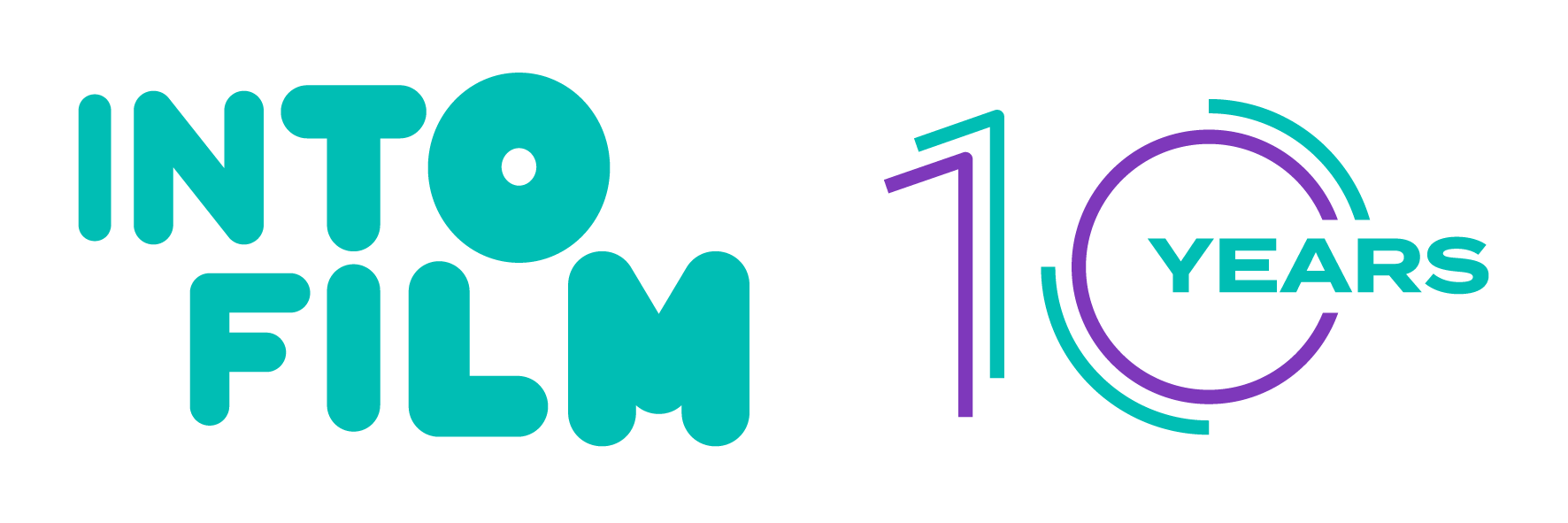
Log in Create an Account
Le Voyage Dans La Lune (A Trip To The Moon)
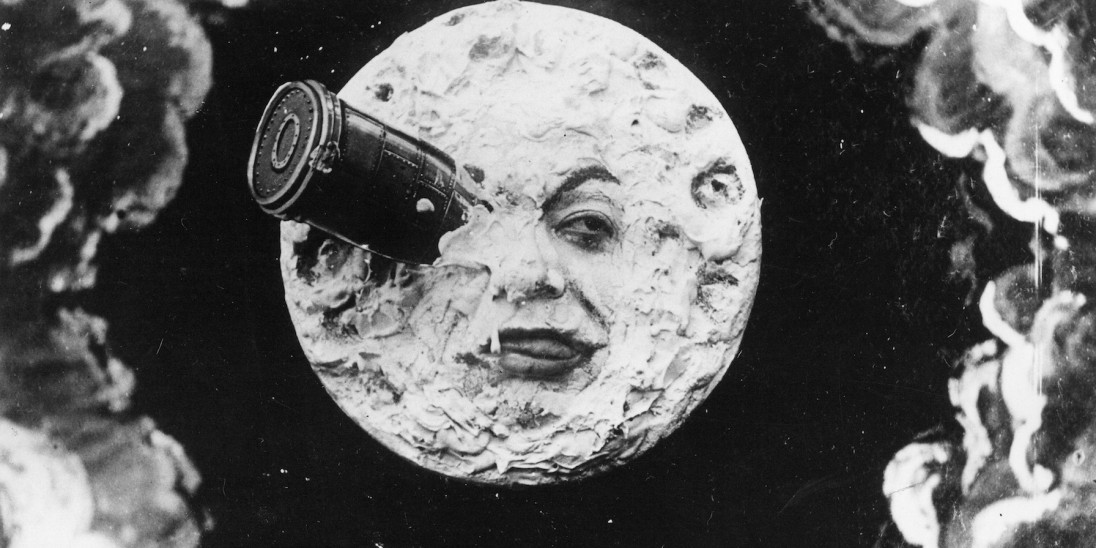
Film Details
Science Fiction and Fantasy, Short Films, Silent
No Dialogue

One of the first narrative films in cinema history, A Trip to the Moon is a playful sci-fi story from the silent era. A group of astronomers agree to take part in a dangerous exploration mission and are rocketed into space in a metal capsule. When they land on the moon, they encounter surreal plants, creatures and fantastical beings, all brought to life with inventive special effects. Director Georges Méliès is credited with having invented the jump cut, an editing trick for making objects and people ‘magically’ appear or disappear on film – a technique that has influenced generations of filmmakers and is still being adopted by today’s TikTok creators. This iconic short film is wildly imaginative, capturing audiences with the stark magic of the moving image to transport them to the moon.
- George Méliès
Cast (in alphabetical order)
- Victor André ,
- Bleuette Bernon ,
- Georges Méliès
Also available with this film on Into Film+
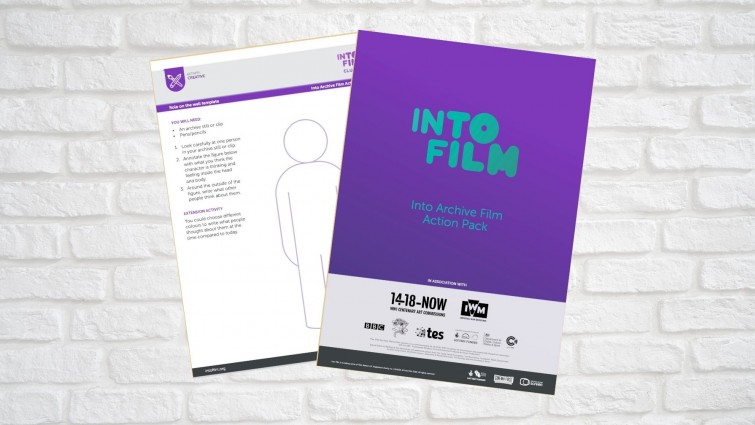
5 RESOURCES
Additional details, classification.
Contains very mild fantasy violence.
Find out more on the BBFC website
Engaging for ages
Into Film recommend this film is engaging for this age range. Please refer to the BBFC guidance for further help in your film choice.
This film is part of the following theme
Also available with this film on into film+, resources to use with this film.
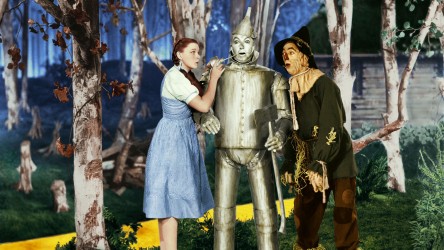
A Brief History of Cinema
This From Silent to CGI: A Brief History of Cinema teaching resource tracks the progress of cinema from the 1800s to the present day.
Suitable for 7–14
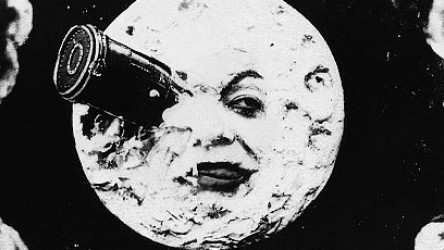
BFI Sci Fi - A Trip to the Moon
A lesson plan to work with the silent classic A Trip to the Moon as stimulus for a KS3 English lesson.
Suitable for 11–14
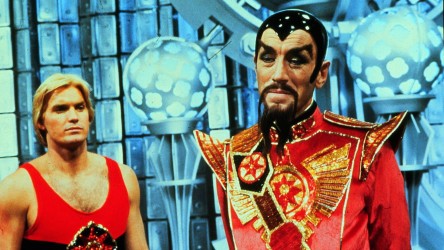
BFI Sci-Fi Flash Gordon
A lesson plan to work with the 1980s classic Flash Gordon as stimulus for a KS3 History, English or Citizenship lesson
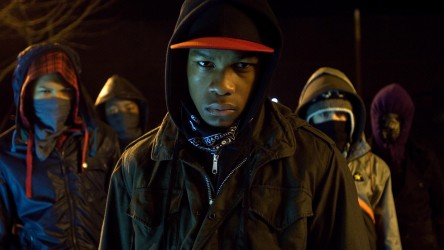
BFI Sci-fi Into Film Festival
This resource supported the BFI Sci-fi strand at the Into Film Festival
Suitable for 11–16
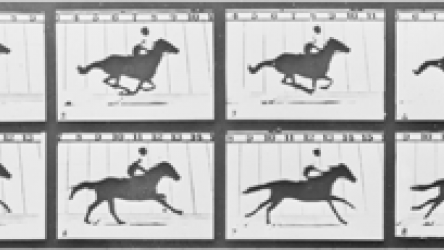
Early Animation
A brief history of early animation techniques and pioneers.
Suitable for All ages
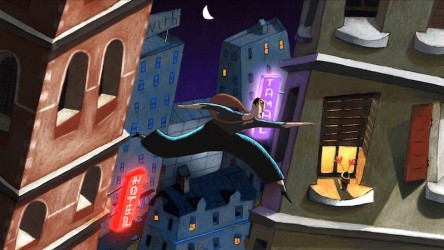
French Film for Primary Clubs
European day of languages, 26 sep.
A resource to support primary Into Film Club members watch, discuss and review French films.
Suitable for 7–11
Into Archive Film Action Pack
This pack provides activities to use with any archive stills or footage.
Related Films
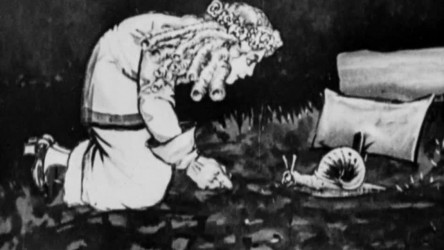
Oh'phelia A Cartoon Burlesque (1919)
Stream on Into Film+
Archive cut-out animation that parodies the characters of 'Hamlet' to tell an amusing version of the age-old Shakespeare classic..
Cert ificate Unclassified
11+ years 10 mins
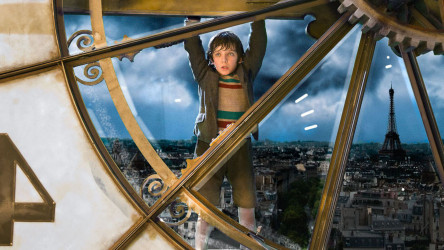
Hugo (2011)
Set in 1931 Paris, an orphan living within the walls of a train station gets wrapped up in a mystery about his father.
1,977 Reviews

7–16 years 126 mins

The Myth of Haftvad Worm (2018)
A woman finds a worm that can spin cotton, but her father plans to use the creature to become rich.
7–14 years 8 mins
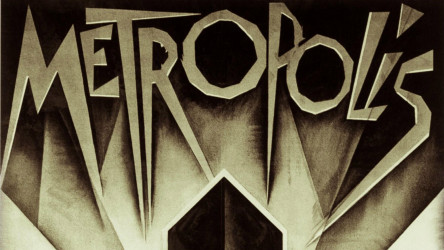
Metropolis (1927)
This visually spectacular German sci-fi classic (made, incredibly, in 1927) sees the rich live in skyscrapers and the poor toil underground.

11+ years 138 mins
Rate this film
Club Leaders can rate films! Help other club leaders decide if this film is suitable for use in their film club by giving it a rating.
Your rating
Click a star to rate this film
Ratings guide
- Worked brilliantly
- Went down well
- Had some value
- Did not enjoy it
- Would not use again
Member rating
Leader rating.
1 leader rating
Reviews (85)
Members rating
Sort reviews by
Viewing 0 of 0 Reviews found.

Into Film Clubs
Into Film Clubs provide opportunities to watch, review and make films.
Start an Into Film Club

Do I Need a Licence?
Information on which licences you need to show films in your education setting.
Find out more

How do Into Film Clubs work?
Find out more about what's involved in running your very own Into Film Club.

Learn to use film to raise literacy attainment and engage students.
You may also be interested in...
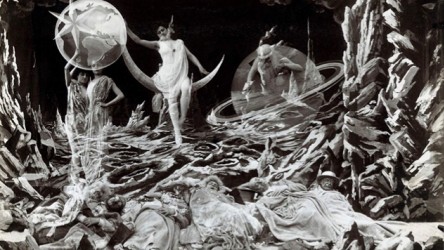
BFI National Archive shorts available to stream with Into Film+
We've partnered with the BFI to make a collection of archive films, preserved by the BFI National Archive, available for educators to stream with Into Film+.
Reading time 5 mins
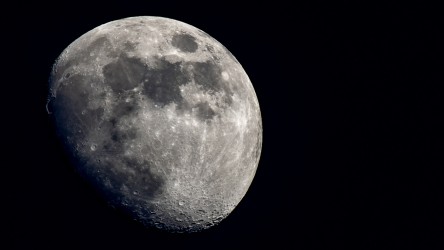
Celebrating 50 years since the Moon landings
On 20 July 1969, human kind first landed on the moon. Celebrate this inspiring, our of this world achievement in your class with our films, resources and more.
Reading time 6 mins

Ella from Chichester wins Review of the Year 2022
Congratulations to Ella, whose review of George Méliès' 1902 sci-fi classic 'A Trip to the Moon' has won Review of the Year.
Reading time 3 mins
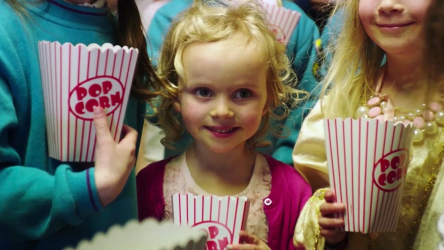
How film clubs can open up the world for small communities
June's Leader of the Month, Jennifer Skinner, from the Isle of Tiree, Scotland, explains how running a film club has benefitted the small island community.
Viewing time 5 mins
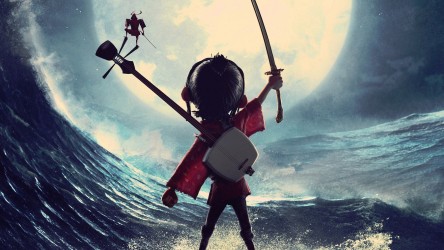
Kubo and the Two Strings: How LAIKA push the boundaries of stop-motion
We look at how LAIKA's Kubo and the Two Strings recreates an authentic-yet-fantastic ancient Japan, whilst pushing the boundaries of stop-motion animation.
Reading time 7 mins

The science behind 'The Martian'
Ridley Scott's space-faring epic 'The Martian' may be rooted in science fiction, but there's a lot more science fact in it than you might think.
Reading time 9 mins
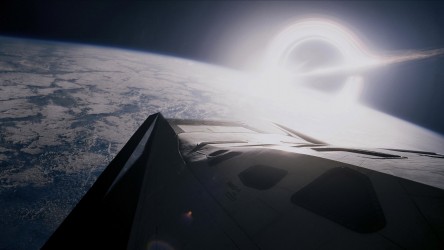
Into Film - Into Space is an ongoing project which provides a host of great free activities around the themes of space and exploration.
Resources 31
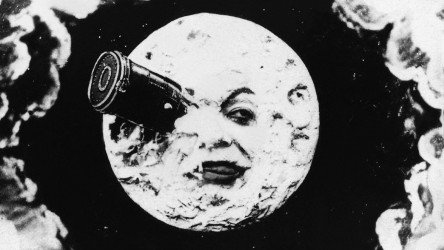
Archive Film
Exploring the highlights of the rich and varied catalogue of Archive film available to stream on Into Film+ and Into Film+ Premium.
No. of films 8
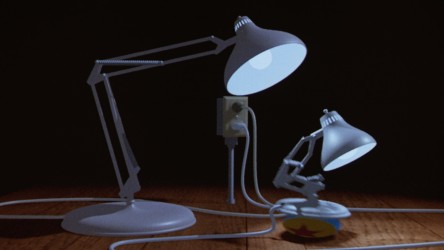
Short Films for Primary
A range of short films suitable for primary ages which are available on the Into Film catalogue.
Suitable for 5–11
No. of films 15
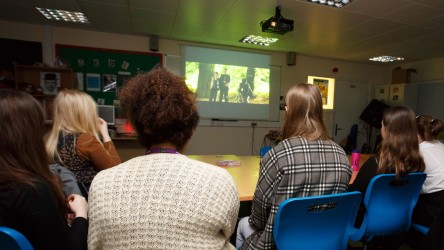

Short Films for Secondary
The best short films available on the Into Film catalogue for secondary ages that are great for literacy learning.
Suitable for 11+
No. of films 25
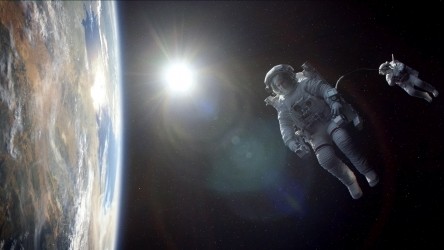
World Space Week, 4 Oct - 10 Oct
A collection of films taking in space exploration throughout cinema history.
No. of films 16
Viewing 0 of 0 related items.
What our educators say
"We are currently screening The Wizard of Oz, profound film that it is, and the last film Wall-E. It's been rewarding observing the KS1 6 year olds run the gamut of emotions from wonder to sadness to joy. " - Mark Ellis, Teacher, ChristChurch C of E Primary School, London
Screen Rant
Why the first sci-fi movie a trip to the moon has aged so well.

Your changes have been saved
Email is sent
Email has already been sent
Please verify your email address.
You’ve reached your account maximum for followed topics.
10 Best Sci-Fi TV Shows Of The 1970s
10 classic sci-fi movies that can't actually be rebooted, one obi-wan kenobi line set up the rise of skywalker's palpatine twist 36 years earlier.
Despite being more than one hundred years old, A Trip to the Moon ( Le Voyage Dans la Lune ) has aged better than hundreds of the sci-fi movies it inspired. Directed by French illusionist Georges Méliès in 1902, A Trip to the Moon set the basis for one of the most popular genres in the history of film with its outlandish concept and groundbreaking special effects. Nowadays, the film is not only regarded as an essential foundation of sci-fi and cinema as a whole but also stands on its own as a good movie, even by today's standards.
Georges Méliès drew inspiration from the works of Jules Verne and H.G. Wells to create the very first film about space exploration . In it, Professor Barbenfouillis (played by Méliès) launches himself and a group of astronomers in a rocket to the moon, where they meet a native civilization of lunar creatures called "Selenites." After getting captured by them and killing their king, the astronomers come back to Earth, but not before taking one of the Selenites with them. As the most ambitious project Méliès had devised, the film employed every trick and illusion he had under his sleeve, plus the construction of intricate sets and the participation of various dancers, singers, and acrobats.
Related: 2020s Movies Are Finally Bringing Back Smart Sci-Fi
Unlike so many lousy sci-fi movies as recent as the 2010s , A Trip to the Moon stands the test of time because it doesn't attempt to be realistic. The short film would require a really high budget and a very careful treatment of what appears onscreen if a director like Steven Spielberg or Christopher Nolan adapted it in their distinctive style. George Méliès neither had the resources to depict an accurate trip to the moon nor the desire to be scientifically correct — and if he did, the vision of such a journey in 1902 would become dated as soon as newer movies elaborated on its premise. Instead, Méliès leaned toward extravagant fantasy and the embellished spectacle of theater. The result was an escapist story that exalted what humans could achieve with the advancement of technology and the philosophy that "work conquers all," something that remains an important part of the essence of sci-fi movies to this day.
In line with this approach, Méliès popularized the use of practical effects to depict fantastical settings, which in turn helped the movie preserve its whimsical aesthetic from the passage of time. These effects included matte paintings, smoke effects, forced perspective, and stunts. The film also helped lay the groundwork for advanced editing and animation techniques with the use of cross-dissolves, jump cuts, and multiple exposures. Also impressive is how, although the movie's scope pushed its budget considerably high for its time (10,000 Francs), it doesn't even compare to the lowest-budget sci-fi movies of today. If Méliès had gone for a more moderate style — like shortening the ship's cannon or having the Selenites drop to the ground instead of exploding when killed — the slightest improvement on those effects by any subsequent movie would have rendered the visuals in A Trip to the Moon dated, and its unique style wouldn't be as impressive today.
With A Trip to the Moon (Le Voyage Dans la Lune) , George Méliès proved that sometimes subtlety is not the best approach. His extravagant vision turned the movie into a classic and protected it from every cultural shift that came later. The birth of sci-fi movies is impressive, but not surprising - coming from the same cinematic genius who created Le Manoir Du Diable , the world's first horror movie .
Next: Why Sci-Fi Movies Are So Divisive At The Box Office
- SR Originals
A Trip to the Moon
Cinema I Love You
- February 21, 2015 / 15:00
- March 6, 2015 / 19:00
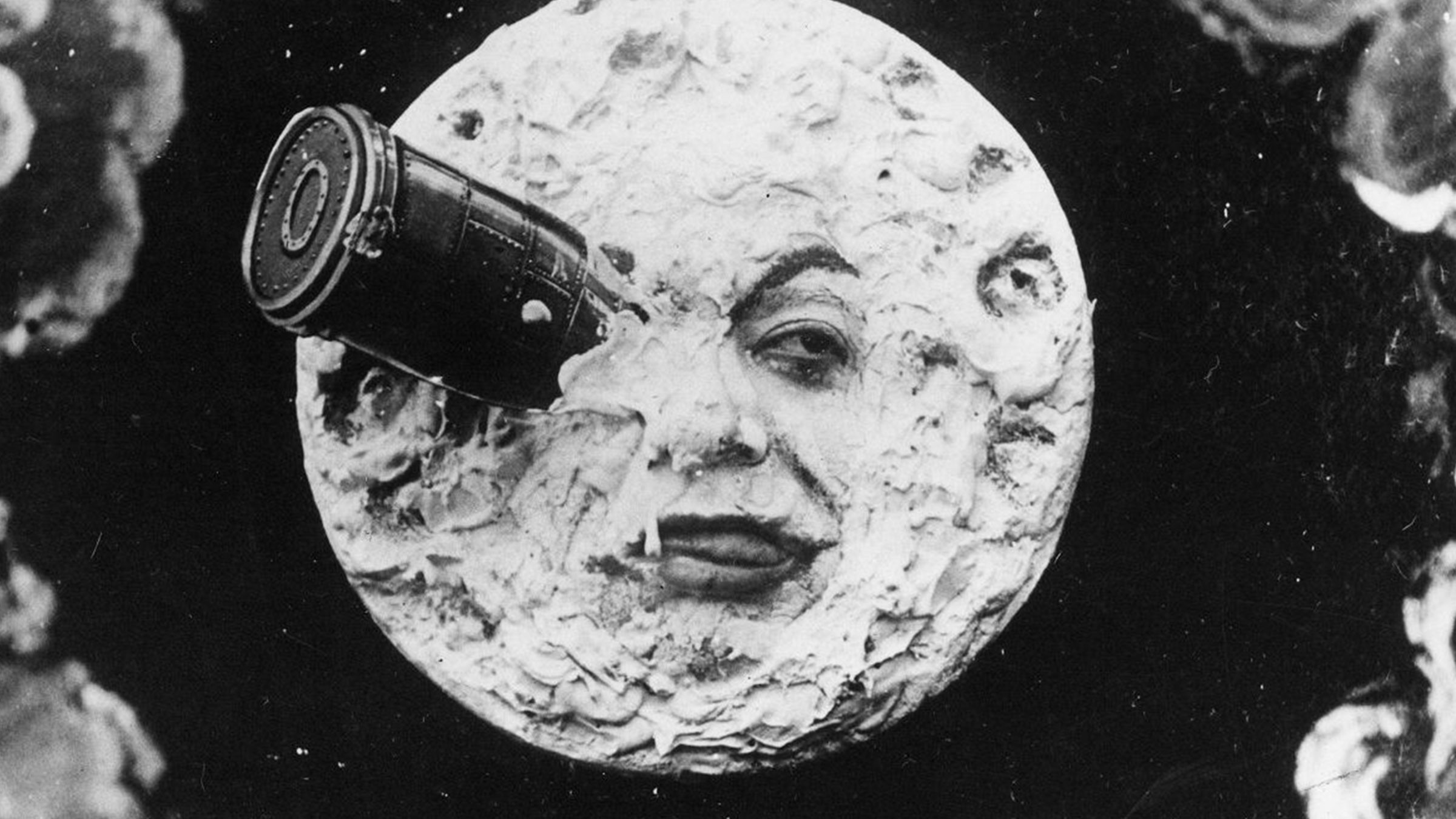
Director: Georges Méliès Cast: Georges Méliès, François Lallement, Jules-Eugène France, 13’, 1902, black & white; silent
A Trip to the Moon is the most famous of over 500 short films produced by cinema pioneer Georges Méliès between 1896 and 1912, and its signature image of a bullet-shaped rocket lodging itself in the eye of a smirking moon is one of the most recognizable images in cinema history. An accomplished magician, Méliès moved from simple recordings of his stage shows to dazzling fantasy epics which were among the first narrative films ever made. These "trick films" combined fantastic yarns, intricate painted sets, and elaborate costumes with such simple but effective special effects as slow motion, dissolves, and superimpositions. Like Méliès's other long films of the period, Trip to the Moon is composed of a series of tableaux, each featuring chaotic action and multiple camera tricks photographed with a stubbornly static camera, which work together to tell a simple story. It proved sensationally popular with audiences, though Edwin S. Porter's The Great Train Robbery rode a slightly more sophisticated narrative to greater success the following year. As one of the earliest examples of cinematic fantasy, A Trip to the Moon paved the way for such filmic flights of fancy as The Wizard of Oz and Star Wars, as it proved that the seduction of the audience through special effects has roots deeper than the blockbusters of the Seventies.
Bardot, la Méprise
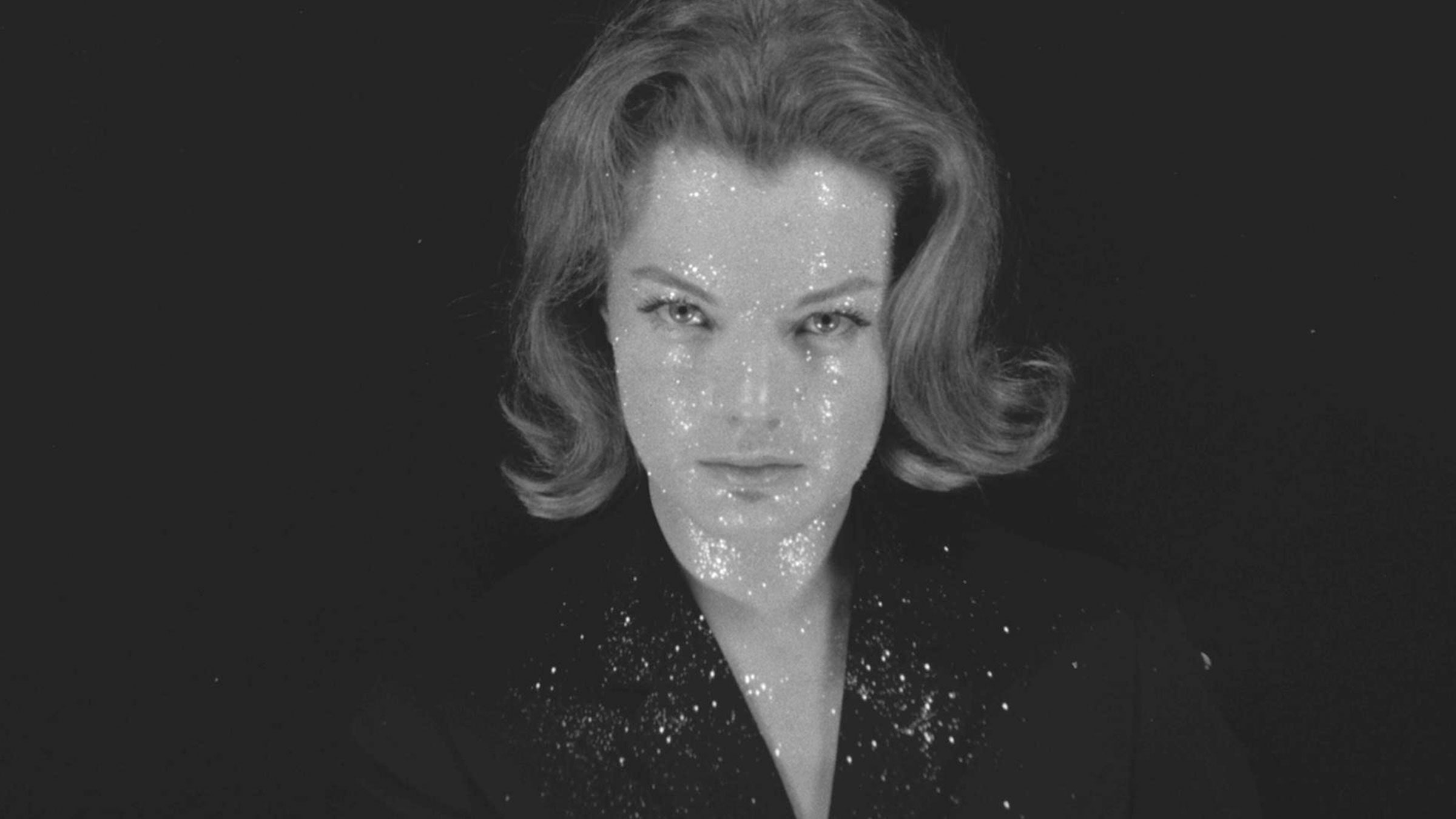
Free Radicals: A History of Experimental Film
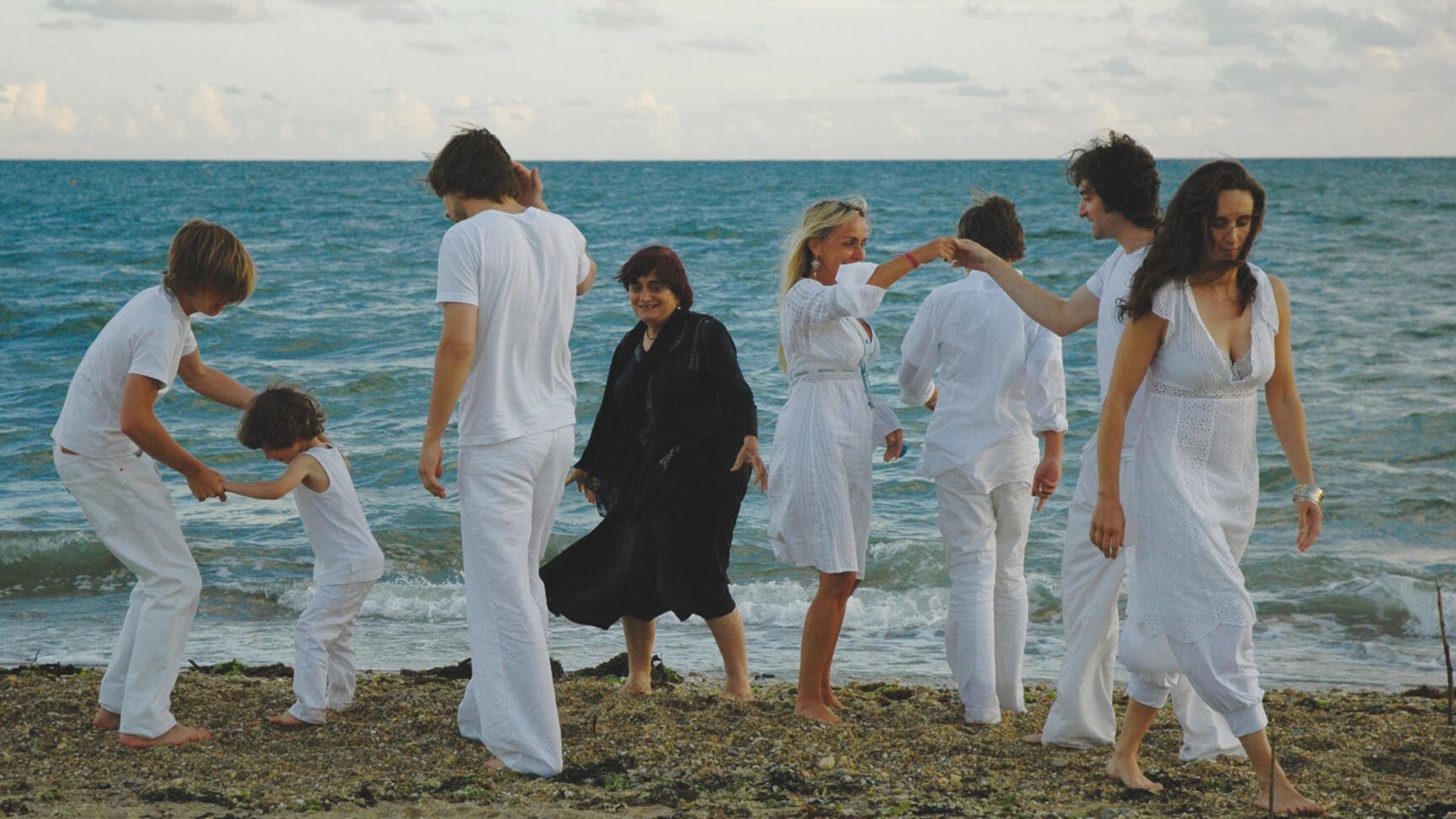
Beaches of Agnès
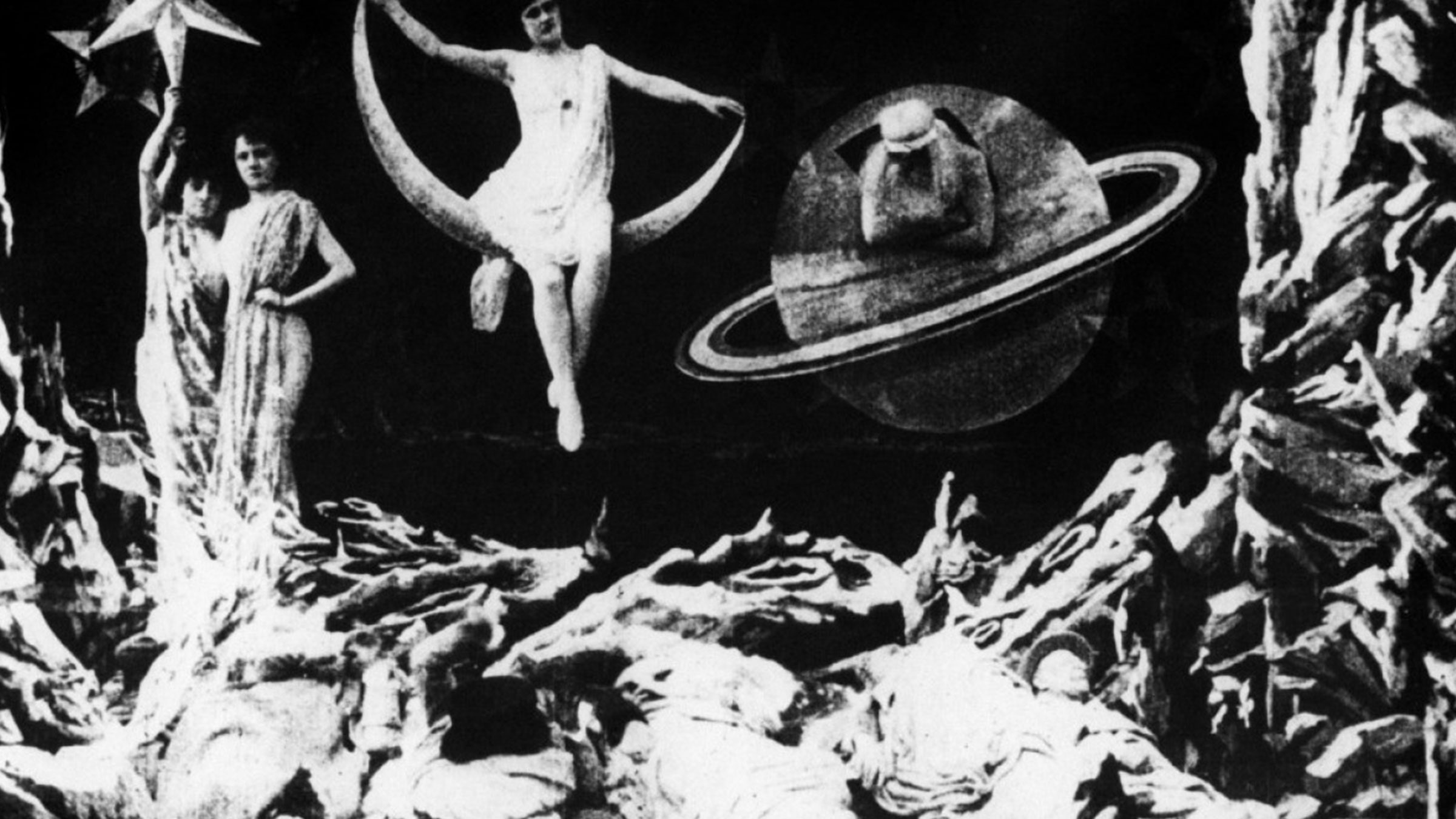
The Extraordinary Voyage
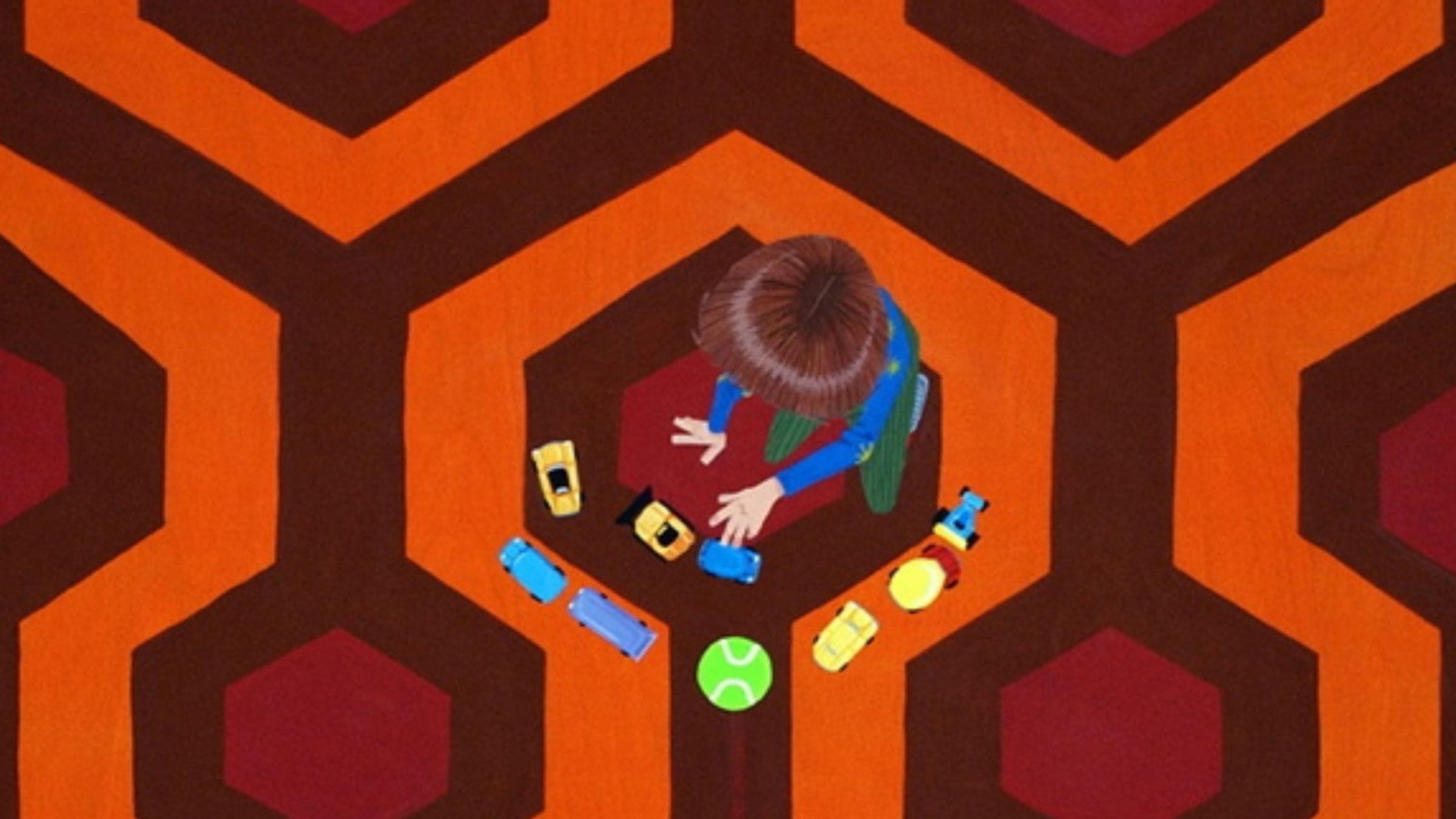
This Film Is Not Yet Rated
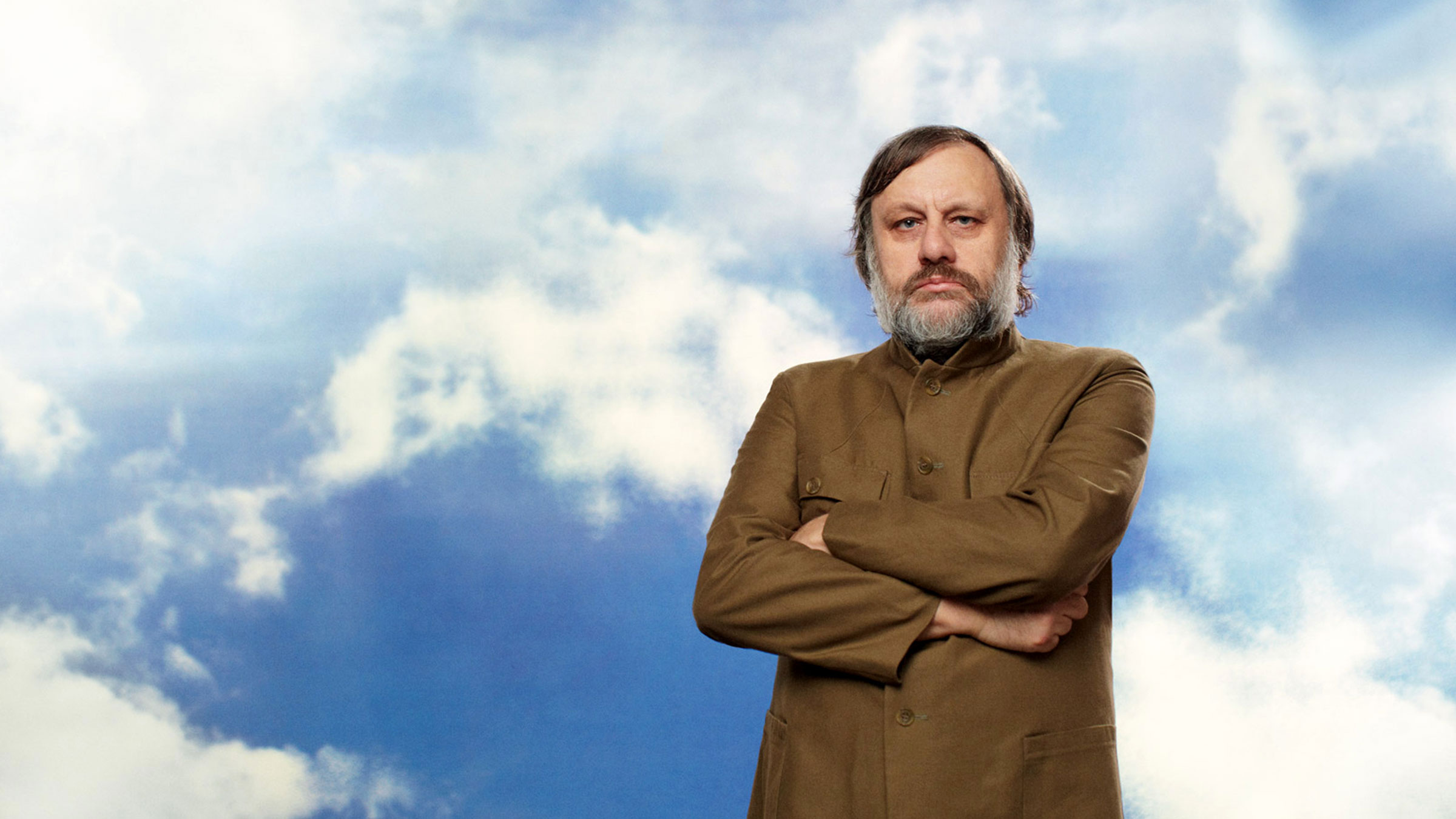
The Pervert's Guide To Cinema
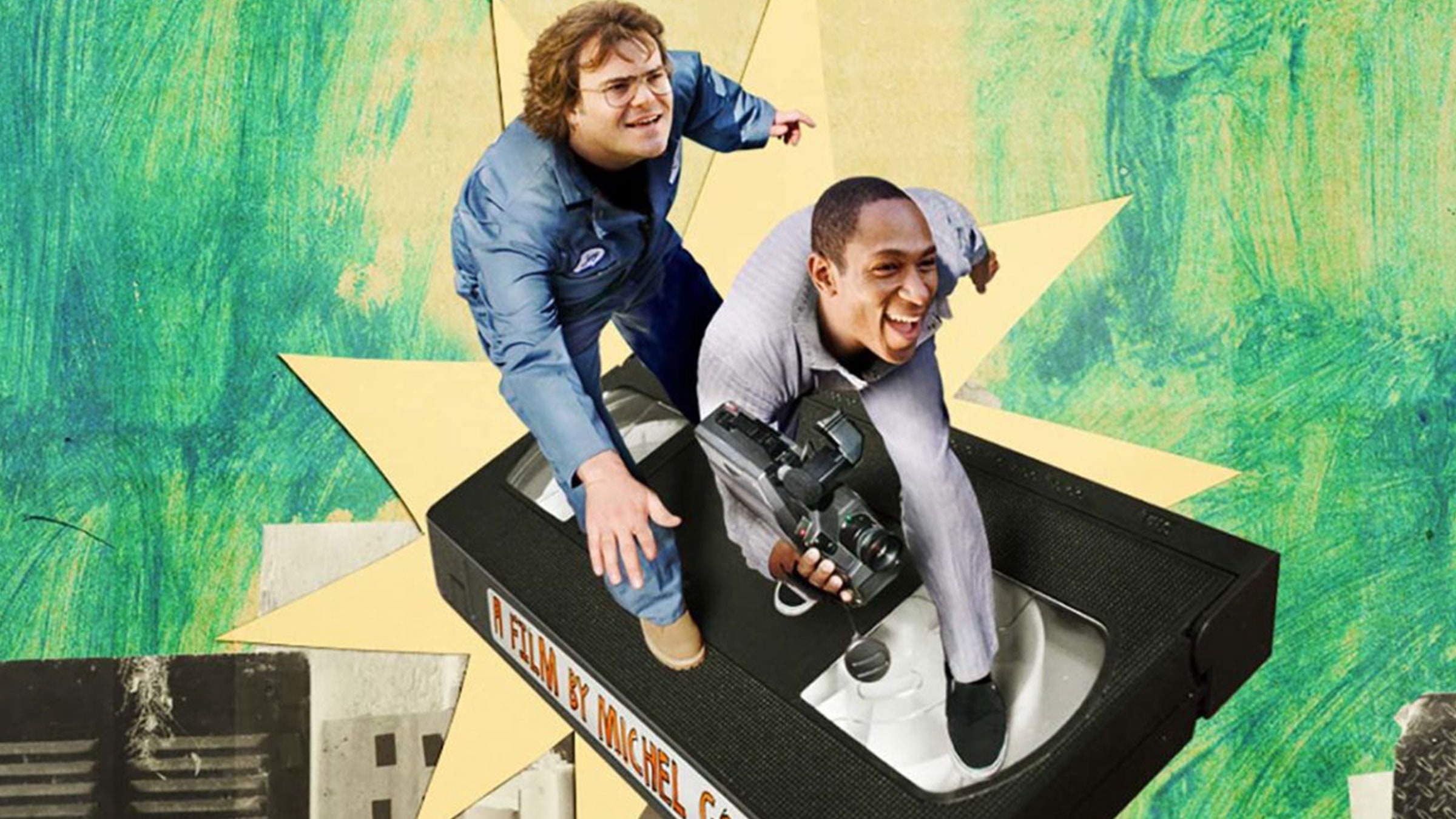
Be Kind Rewind
Today's Stories: Felis Hande Ortaç
Inspired by the exhibition Istanbuls Today, Today's Stories series continues with Hande Ortaç's story "Felis"! This series gathers short stories written by authors encouraged by the photographs in the exhibition.

Midnight Stories: The Soul Aşkın Güngör
The wind blows, rubbing against my legs made of layers of metal and wires, swaying the leaves of grass that have shot up from the cracks in the tarmac, and going off to the windows that look like the eyes of dead children in the wrecked buildings that seem to be everywhere as far as the eye can see.

Bosphorus at the Orientalist Paintings
The Bosphorus, which divides the city from north to south, separates two continents, renders Istanbul distinct for western painters, offers the most picturesque spectacles for western artists.
VISITING HOURS
Tuesday - Saturday 10:00 - 19:00
Friday 10:00 - 22:00
Sunday 12:00 - 18:00
The museum is closed on Mondays.
Long Friday
18:00 - 22:00 free of admission.
Young Wednesday
On Wednesdays, the students can
visit the museum free of admission.
ENTRANCE FEES
Full ticket: 100 TL
Discounted: 50 TL
Groups: 80 TL (minimum 10 people)
E-NEWSLETTER SUBSCRIPTION
Disabled visitors, open positions, venue rental, personal data.
© 2024 All Rights Reserved | Conditions of Use
Log in or sign up for Rotten Tomatoes
Trouble logging in?
By continuing, you agree to the Privacy Policy and the Terms and Policies , and to receive email from the Fandango Media Brands .
By creating an account, you agree to the Privacy Policy and the Terms and Policies , and to receive email from Rotten Tomatoes and to receive email from the Fandango Media Brands .
By creating an account, you agree to the Privacy Policy and the Terms and Policies , and to receive email from Rotten Tomatoes.
Email not verified
Let's keep in touch.

Sign up for the Rotten Tomatoes newsletter to get weekly updates on:
- Upcoming Movies and TV shows
- Rotten Tomatoes Podcast
- Media News + More
By clicking "Sign Me Up," you are agreeing to receive occasional emails and communications from Fandango Media (Fandango, Vudu, and Rotten Tomatoes) and consenting to Fandango's Privacy Policy and Terms and Policies . Please allow 10 business days for your account to reflect your preferences.
OK, got it!
- About Rotten Tomatoes®
- Login/signup
Movies in theaters
- Opening This Week
- Top Box Office
- Coming Soon to Theaters
- Certified Fresh Movies
Movies at Home
- Fandango at Home
- Prime Video
- Most Popular Streaming Movies
- What to Watch New
Certified fresh picks
- 85% Speak No Evil Link to Speak No Evil
- 77% Beetlejuice Beetlejuice Link to Beetlejuice Beetlejuice
- 95% Rebel Ridge Link to Rebel Ridge
New TV Tonight
- -- Emmys: Season 76
- -- American Sports Story: Aaron Hernandez: Season 1
- -- Agatha All Along: Season 1
- 93% The Penguin: Season 1
- -- Monsters: The Lyle and Erik Menendez Story: Season 2
- -- Twilight of the Gods: Season 1
- -- Tulsa King: Season 2
- -- High Potential: Season 1
- -- Frasier: Season 2
- -- A Very Royal Scandal: Season 1
Most Popular TV on RT
- 61% The Perfect Couple: Season 1
- 85% The Lord of the Rings: The Rings of Power: Season 2
- 74% Kaos: Season 1
- 63% The Old Man: Season 2
- 100% Slow Horses: Season 4
- 100% Dark Winds: Season 2
- -- Into the Fire: The Lost Daughter: Season 1
- 93% Bad Monkey: Season 1
- Best TV Shows
- Most Popular TV
Certified fresh pick
- 93% The Penguin: Season 1 Link to The Penguin: Season 1
- All-Time Lists
- Binge Guide
- Comics on TV
- Five Favorite Films
- Video Interviews
- Weekend Box Office
- Weekly Ketchup
- What to Watch
Resident Evil Movies In Order: How To Watch The Series Chronologically
50 Best New Horror Movies of 2024
What to Watch: In Theaters and On Streaming
Awards Tour
Transformers One First Reviews: The Best Transformers Movie Yet
The Penguin First Reviews: Colin Farrell’s Wild Performance Makes the Series a Must-Watch
- Trending on RT
- Hispanic Heritage Month
- Emmy Predictions
- Toronto Film Festival
- Best New Horror Movies
A Trip to the Moon
Where to watch.
Watch A Trip to the Moon with a subscription on Max, rent on Prime Video, or buy on Prime Video, Apple TV.
Critics Reviews
Audience reviews, cast & crew.
Georges Méliès
Jeanne d'Alcy
Prof. Barbenfouillis
Victor André
Bleuette Bernon
Lady in the Moon
More Like This
Related movie news.

42 Facts About The Movie A Trip To The Moon
Written by Frederica Hamilton
Modified & Updated: 02 Jun 2024
Reviewed by Jessica Corbett
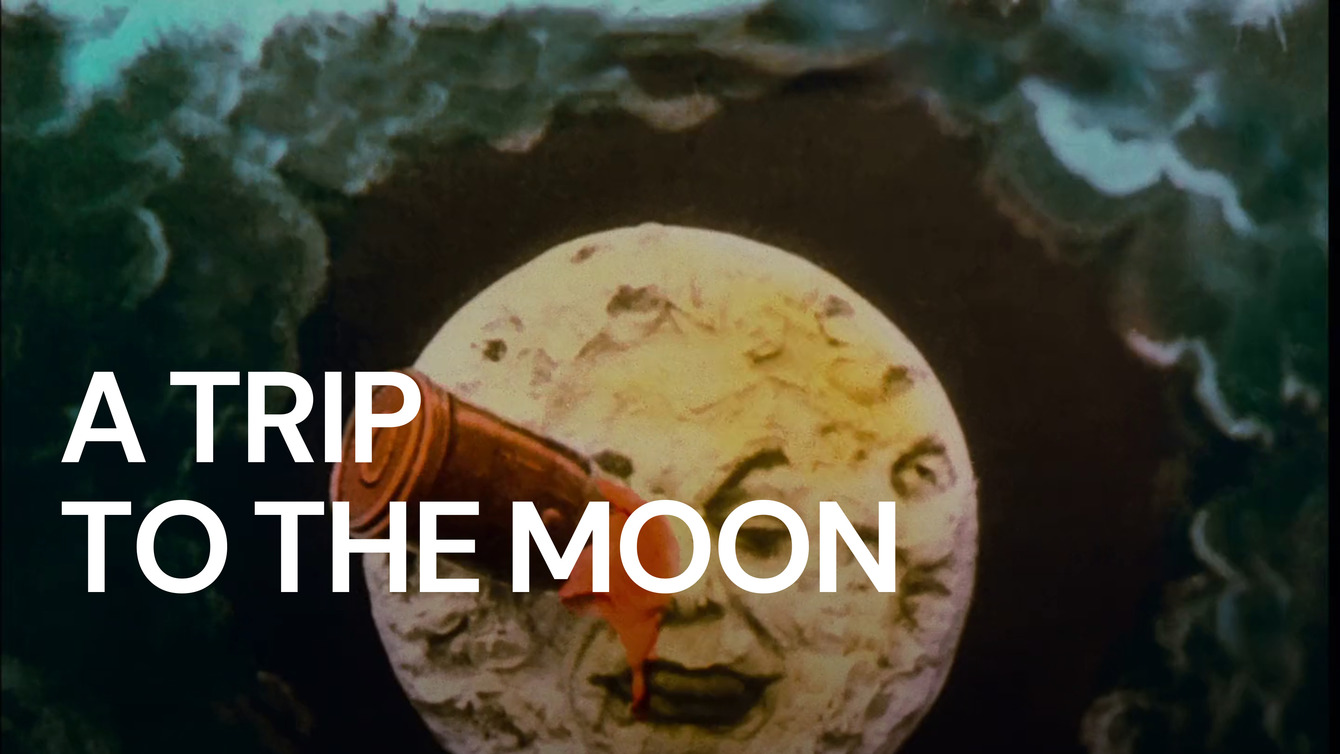
The movie “A Trip to the Moon” is a true classic in the world of cinema. Released in 1902 and directed by Georges Méliès, this French silent film tells the fascinating story of a group of astronomers who embark on a journey to the moon. It was one of the earliest examples of science fiction film and remains a groundbreaking work in the history of cinema. With its imaginative special effects and innovative storytelling techniques, “A Trip to the Moon” paved the way for future filmmakers and continues to inspire modern audiences. In this article, we will delve into 42 fascinating facts about this iconic movie, revealing intriguing details about its production, impact, and enduring legacy.
Key Takeaways:
- “A Trip to the Moon” is a groundbreaking silent film directed by Georges Méliès, known for its imaginative special effects and influence on science fiction cinema.
- The movie, released in 1902, is a significant milestone in cinematic history, inspiring future filmmakers and earning recognition as a timeless classic.
The film was directed by Georges Méliès.
Georges Méliès was a French filmmaker and illusionist who is known as the pioneer of special effects in cinema. He directed and produced A Trip to the Moon, which was released in 1902.
The movie is also known by its French title, Le Voyage dans la Lune.
Le Voyage dans la Lune translates to “A Trip to the Moon” in English.
It is a silent, black and white film.
A Trip to the Moon was made in the early days of cinema when sound and color technology were yet to be developed.
The film is approximately 14 minutes long.
Despite its short duration, A Trip to the Moon is considered a significant milestone in cinematic history.
It is based on Jules Verne’s novel, From the Earth to the Moon.
Jules Verne’s novel served as the inspiration for the storyline of A Trip to the Moon.
The movie features imaginative and groundbreaking special effects.
Méliès used innovative techniques such as stop-motion animation and double exposure to create stunning visual effects in the film.
A Trip to the Moon is one of the earliest science fiction films.
It showcases the creativity and imagination of early filmmakers who explored the possibilities of the medium.
The iconic image of a spaceship crashing into the moon’s eye is from this movie.
The image has become synonymous with A Trip to the Moon and is often referenced in pop culture.
The movie was made on a relatively small budget.
Méliès managed to create a visually stunning film with limited resources.
The cast of the film includes Georges Méliès himself.
Méliès not only directed the film but also played the role of Professor Barbenfouillis, the main character.
The film was originally released in black and white, but Méliès later hand-painted some copies.
This hand-painted version added color to certain scenes and enhanced the visual experience of the film.
A Trip to the Moon is known for its distinct art direction.
The set design and costumes contribute to the whimsical and fantastical atmosphere of the movie.
The film features a combination of live-action and animation sequences.
Méliès seamlessly blended these two techniques to create a unique cinematic experience.
A Trip to the Moon was initially met with mixed reviews.
Some critics praised its technical achievements, while others did not understand its artistic value.
The movie was rediscovered in the 1920s and gained recognition as a cinematic masterpiece.
It is now regarded as one of the most important and influential films in the history of cinema.
A Trip to the Moon inspired many future filmmakers, including Steven Spielberg.
Spielberg has cited Méliès and A Trip to the Moon as a major influence on his filmmaking career.
The film was groundbreaking in its use of special effects.
Méliès’ innovative techniques paved the way for the development of visual effects in cinema.
A Trip to the Moon was highly ambitious for its time.
Méliès pushed the boundaries of what was thought possible in filmmaking and created a memorable and imaginative work.
The film’s plot follows a group of astronomers who travel to the moon.
They encounter strange creatures and face various challenges during their journey.
A Trip to the Moon was a commercial success.
Despite its initial mixed reception, the film attracted audiences with its captivating visuals and storyline.
The movie went on to inspire other filmmakers to explore the possibilities of science fiction in cinema.
It had a lasting impact on the genre and influenced future films such as Star Wars.
A Trip to the Moon is recognized as a significant cultural and historical artifact.
It is included in UNESCO’s Memory of the World Register, which preserves and promotes documentary heritage.
The film showcases Méliès’ skill as a performer and magician.
His background in stage magic and illusion contributed to the film’s imaginative visuals and tricks.
A Trip to the Moon was restored and colorized in 2010.
The restoration process brought the film back to its original glory and allowed modern audiences to experience it as intended.
The iconic rocket ship used in the film was named “La fusée en pétard” (The Fireworks Rocket).
This rocket design has become synonymous with space travel in popular culture.
A Trip to the Moon was considered a pioneering work in the use of narrative storytelling in cinema.
Méliès used visual cues and gestures to convey the story, as there were no dialogues in the film.
The film’s imaginative portrayal of the moon and its inhabitants captured the imagination of audiences.
Méliès’ creative interpretation of the lunar landscape added to the film’s charm and appeal.
A Trip to the Moon was a significant technical achievement for its time.
Méliès’ use of multiple exposures and innovative editing techniques showcased his mastery of the medium.
The film’s success led to Méliès making more fantasy and science fiction films.
He continued to experiment with special effects and create visually stunning works throughout his career.
A Trip to the Moon is often regarded as a precursor to modern science fiction cinema.
Its influence can be seen in later films that explore similar themes and concepts.
The film’s iconic image of the moon with a rocket stuck in its eye has been referenced and parodied in various forms of media.
It has become a symbol of early science fiction cinema.
A Trip to the Moon was one of the earliest films to use a narrative structure in cinema.
Méliès’ storytelling techniques set the foundation for future filmmakers to explore the possibilities of storytelling in film.
The film was a major success in both France and abroad.
It was widely distributed and screened in theaters around the world.
A Trip to the Moon is a prime example of Méliès’ unique filmmaking style.
His blend of fantasy, humor, and visual spectacle is evident throughout the film.
The movie’s success helped establish filmmaking as a legitimate art form.
It showed that films could be more than just simple recordings of reality.
A Trip to the Moon was one of the first films to have a clear narrative structure.
Méliès’ use of storytelling techniques elevated the film beyond a mere visual spectacle.
The film’s success allowed Méliès to expand his studio and produce more ambitious works.
He became one of the most influential filmmakers of his time.
A Trip to the Moon was groundbreaking in its use of special effects.
Méliès’ innovative techniques set the stage for the future development of visual effects in cinema.
The film’s impact can still be seen in contemporary science fiction films.
Its influence can be felt in movies that explore similar themes of space exploration and fantastical worlds .
A Trip to the Moon was named one of the 100 greatest films of the 20th century by Time magazine.
Its inclusion in the list solidifies its status as a significant cinematic achievement.
The film’s success allowed Méliès to establish his own film production company.
He had full creative control over his projects and continued to make groundbreaking films throughout his career.
A Trip to the Moon remains a timeless classic and a milestone in the history of cinema.
Its imaginative storytelling and groundbreaking visual effects continue to captivate audiences today.
In conclusion, “A Trip to the Moon” is a groundbreaking and timeless classic that has left an indelible mark on the history of cinema. From its pioneering use of special effects to its imaginative storytelling, this film continues to inspire and captivate audiences even over a century after its release. Its iconic image of a rocket landing in the eye of the moon remains one of the most recognizable scenes in movie history.With its combination of science fiction, fantasy, and adventure, “A Trip to the Moon” paved the way for future filmmakers to explore new realms of possibility on the silver screen. Its influence can be seen in countless films that followed, solidifying its status as a true cinematic masterpiece.Whether you are a die-hard fan of classic cinema or simply curious about the early days of filmmaking, “A Trip to the Moon” is a must-watch. Its whimsical charm, innovative techniques, and imaginative narrative continue to make it a beloved treasure for movie enthusiasts around the world.
1. When was “A Trip to the Moon” released?
A Trip to the Moon” was released on September 1 , 1902.
2. Who directed “A Trip to the Moon”?
The film was directed by the French filmmaker Georges Méliès.
3. Is “A Trip to the Moon” a silent film?
Yes, “A Trip to the Moon” is a silent film, as it predates the invention of sound in movies.
4. What was the running time of “A Trip to the Moon”?
The original running time of the film was around 14 minutes.
5. Did “A Trip to the Moon” win any awards?
During its time, there were no official film awards, but “A Trip to the Moon” received critical acclaim for its innovative visuals and storytelling.
6. Are there any remakes or adaptations of “A Trip to the Moon”?
While there have been no direct remakes, the film has served as inspiration for various movies, music videos, and artistic creations over the years.
7. Is “A Trip to the Moon” available to watch today?
Yes, “A Trip to the Moon” has been preserved and is available for viewing online and on DVD as part of film history collections.
8. What is the significance of the rocket landing in the eye of the moon?
The iconic image of the rocket landing in the eye of the moon symbolizes humanity’s conquest of uncharted territories and the triumph of exploration over the unknown.
9. How did “A Trip to the Moon” influence future filmmakers?
The film’s imaginative storytelling and pioneering use of special effects opened up new possibilities for filmmakers to explore science fiction and fantasy genres, leaving a lasting impact on the industry.
10. Why is “A Trip to the Moon” considered a classic?
“A Trip to the Moon” is considered a classic due to its historical significance, innovative techniques, and enduring influence on the art of filmmaking.
If you're fascinated by the early days of cinema, delve into the captivating world of silent film stars. For fans of science fiction , discover surprising facts about Isaac Asimov's iconic novel, I, Robot. Francophiles and movie buffs alike should explore the French cinema showcase at the City of Lights, City of Angels (COLCOA) French Film Festival.
Was this page helpful?
Our commitment to delivering trustworthy and engaging content is at the heart of what we do. Each fact on our site is contributed by real users like you, bringing a wealth of diverse insights and information. To ensure the highest standards of accuracy and reliability, our dedicated editors meticulously review each submission. This process guarantees that the facts we share are not only fascinating but also credible. Trust in our commitment to quality and authenticity as you explore and learn with us.
Share this Fact:
Ask the publishers to restore access to 500,000+ books.
Internet Archive Audio

- This Just In
- Grateful Dead
- Old Time Radio
- 78 RPMs and Cylinder Recordings
- Audio Books & Poetry
- Computers, Technology and Science
- Music, Arts & Culture
- News & Public Affairs
- Spirituality & Religion
- Radio News Archive

- Flickr Commons
- Occupy Wall Street Flickr
- NASA Images
- Solar System Collection
- Ames Research Center

- All Software
- Old School Emulation
- MS-DOS Games
- Historical Software
- Classic PC Games
- Software Library
- Kodi Archive and Support File
- Vintage Software
- CD-ROM Software
- CD-ROM Software Library
- Software Sites
- Tucows Software Library
- Shareware CD-ROMs
- Software Capsules Compilation
- CD-ROM Images
- ZX Spectrum
- DOOM Level CD

- Smithsonian Libraries
- FEDLINK (US)
- Lincoln Collection
- American Libraries
- Canadian Libraries
- Universal Library
- Project Gutenberg
- Children's Library
- Biodiversity Heritage Library
- Books by Language
- Additional Collections

- Prelinger Archives
- Democracy Now!
- Occupy Wall Street
- TV NSA Clip Library
- Animation & Cartoons
- Arts & Music
- Computers & Technology
- Cultural & Academic Films
- Ephemeral Films
- Sports Videos
- Videogame Videos
- Youth Media
Search the history of over 866 billion web pages on the Internet.
Mobile Apps
- Wayback Machine (iOS)
- Wayback Machine (Android)
Browser Extensions
Archive-it subscription.
- Explore the Collections
- Build Collections
Save Page Now
Capture a web page as it appears now for use as a trusted citation in the future.
Please enter a valid web address
- Donate Donate icon An illustration of a heart shape
A Trip To The Moon George Méliès
Video item preview, share or embed this item, flag this item for.
- Graphic Violence
- Explicit Sexual Content
- Hate Speech
- Misinformation/Disinformation
- Marketing/Phishing/Advertising
- Misleading/Inaccurate/Missing Metadata
plus-circle Add Review comment Reviews
30,455 Views
39 Favorites
DOWNLOAD OPTIONS
In collections.
Uploaded by NapkinGod on April 10, 2017
SIMILAR ITEMS (based on metadata)

A Trip to the Moon
In this silent film, a group of scientists ride to the moon in a cannon shell. more
In this silent film, a group of scientists ride to the moon in a ... More
Starring: Bleuette Bernon Brunet
Director: Georges Melies
Add Max to any Hulu plan starting at an additional $9.99/month .*
*The price of the Max (No Ads) Add-on will increase to $16.99/month on 9/17/24. Hulu free trial available for new and eligible returning Hulu subscribers only. Cancel anytime. Additional terms apply. HBO content available via Hulu. Additional content only available via Max app. Hulu with Max is only accessible in the U.S. and certain U.S. territories where a high-speed broadband connection is available. Use of Max is subject to its own terms and conditions, see max.com/terms-of-use/en-us for details. Programming and content subject to change. Max is used under license. ©2024 Warner Bros. Ent. All rights reserved. TM & © DC.
In this silent film, a group of scientists ride to the moon in a cannon shell.
SIGN UP NOW

About this Movie
Select Your Plan
Streaming library with tons of tv episodes and movies, up to 6 user profiles, no ads in streaming library, download and watch, available add-ons, sports add-on.
Español Add-on
Entertainment Add-on
- Israel-Gaza War
- War in Ukraine
- US Election
- US & Canada
- UK Politics
- N. Ireland Politics
- Scotland Politics
- Wales Politics
- Latin America
- Middle East
- In Pictures
- BBC InDepth
- Executive Lounge
- Technology of Business
- Women at the Helm
- Future of Business
- Science & Health
- Artificial Intelligence
- AI v the Mind
- Film & TV
- Art & Design
- Entertainment News
- Destinations
- Australia and Pacific
- Caribbean & Bermuda
- Central America
- North America
- South America
- World’s Table
- Culture & Experiences
- The SpeciaList
- Natural Wonders
- Weather & Science
- Climate Solutions
- Sustainable Business
- Green Living
Jared Isaacman, the high-school dropout behind historic spacewalk

American entrepreneur and billionaire Jared Isaacman became the first non-professional astronaut to walk in space on Thursday.
The 41-year-old bankrolled the Polaris Dawn mission that launched him and three others into space aboard a SpaceX Crew Dragon spaceship.
Worth an estimated $1.9bn (£1.46bn), Mr Isaacman made his fortune from payment processing company Shift4 Payments, which he founded in 1999 aged 16.
The businessman had long been passionate about flying, first taking pilot lessons in 2004 and later setting a world record for circumnavigating the world in a light jet.
Stepping out into space for his first time on Thursday, the businessman said: “Back at home we all have a lot of work to do.
“But from here Earth sure looks like a perfect world.”
SpaceX engineer Sarah Gillis also did a spacewalk after Isaacman returned.
Ms Gillis, the violinist-turned-aerospace-engineer, is the Polaris Dawn's mission specialist.
Polaris Dawn is not Mr Isaacman's first space mission. In 2021, he bankrolled and led the first private, all-civilian team to ever orbit the Earth.
That crew - named Inspiration4 - left on a SpaceX capsule from Florida and spent three days in space before splashing down successfully in the Atlantic Ocean.
Time magazine estimated that Mr Isaacman paid $200m (£153m) to fellow billionaire Elon Musk for all four seats aboard the SpaceX craft.
“That was a heck of a ride for us,” Mr Isaacman radioed shortly after landing at the time. “We're just getting started.”
- Mission Polaris Dawn sets off on record orbit
Mr Isaacman was born in Union, New Jersey, where, from an early age, he wasn't afraid to go against the grain and push boundaries.
At the age of 15, he dropped out of high school and later took a GED (a high-school equivalency exam), according to the Netflix docuseries Countdown: Inspiration4 Mission to Space.
"I was a horrible student," Mr Isaacman said in the series. "And I wasn't, like, happy in school, either."
A year later, he launched his successful company Shift4 Payments from his parents’ basement, according to a report by Forbes.
The company now handles payments for a third of restaurants and hotels in the US, including big names like Hilton, Four Seasons, KFC and Arby’s; and processes over $260bn (£199bn) annually, according to its website.
Mr Isaacman also founded Draken International in 2011, a defence firm that trains Air Force pilots and owns the world’s largest fleet of private military aircrafts.
In 2019, Mr Isaacman sold a majority stake in Draken to Blackstone, a Wall Street firm, for a nine-figure sum, Forbes reported, launching himself into billionaire status.
The magazine dubbed him a "thrill seeker" in a 2020 profile, reporting that for fun, Mr Isaacman “bullets the MiG faster than the speed of sound and climbs mountains to unwind from non-stop, intense 80-plus-hour weeks".
He also set a world speed record in 2009 for flying around the globe.
In the docuseries, Mr Isaacman said: "I do believe you only get one crack at life."
"To the extent you have the means to do so, you have this obligation to live life to the fullest," he added. "You never know when it's going to be your last day."
Mr Isaacman is married, has two daughters and lives with his family in New Jersey.
He and the others on board the Polaris Dawn are expected to return on Saturday.
Ukraine war latest: Zelenskyy pleads for more support to protect Ukraine from 'Russian terror'
Volodymyr Zelenskyy reveals Russia launched around 30 missiles and 800 aerial bombs at Ukraine this week and reiterates his country needs more support from its allies; while the UK's former foreign secretary James Cleverly criticises Sir Keir Starmer over long-range missile negotiations.
Sunday 15 September 2024 12:04, UK

- Zelenskyy says Russian military launched 30 missiles, more than 800 bombs and 300 attack drones this week as he calls for more support from allies
- Married couple killed in overnight missile attack in Ukraine
- UK's former foreign secretary says it's "disappointing" the government has failed to get Ukraine permission for long-range missile use
- David Lammy says "we won't be bullied by Putin's shameless grandstanding" after Russian president's NATO threats
- Ukrainian diplomat says discussions over using the West's long-range missiles are "a stumbling block"
- Deborah Haynes analysis : Western allies face risks green-lighting long-range missiles - but bowing to Russian threats would be more dangerous
- James Matthews analysis: Can US call Putin's bluff without triggering catastrophe?
Earlier this week, Russia's Vladimir Putin threatened NATO if Ukraine is allowed to use long-range missiles in Russia's territory - here is what he said:
On Sunday Morning With Trevor Phillips, we askedForeign Secretary David Lammy about the threat.
He replied: "Putin threatens every few months to use nuclear weapons. It's totally unacceptable.
"We won't be bullied by Putin's shameless grandstanding.
"We cannot support this kind of gross fascist imperialism in Europe in the 21st century. We must do everything we can to repel it."
The foreign secretary said there will "of course" be a dialogue with Russia at some stage, as that is how wars are ended.
"But clearly the posture of Putin at this stage does not suggest a man who's up for negotiation," he added.
We reported earlier that Russia launched three missiles at Ukraine overnight.
Odesa's regional governor Oleh Kiper has now revealed two people - a married couple - were killed in Odesa's suburbs, while another person was wounded in the attack.
Ukraine's air force earlier said the Russians launched two ballistic missiles and one guided air missile targeting the southern region of Odesa.
The guided air missile was destroyed, the air force said, but it didn't say what happened to the ballistic missiles.
The missile attack came as Ukraine and Russia fired drone attacks at one another through the night.
Natalia Galibarenko, Ukraine's Head of Mission to NATO, has appeared on this morning's edition of Sunday Morning With Trevor Phillips.
She said the situation on the battlefield is "complicated" for Ukrainians but "under control".
Russia is pushing into the Donbas area, which Ukraine is trying to push back.
The counter-offensive into Russia has "not failed", she insisted, saying many of their military aims have "succeeded".
She said Ukraine is "not disappointed" over the lack of clarity over whether it will be allowed by the UK and US to fire long-range missiles into Russian territory.
"We [are] already used to the situation, when we were told at the beginning, there will be no Western attacks then we were told there would be no F-16 [fighters], and all these obstacles we came through," she said.
"And this is just another thing, a stumbling block, which should we should tackle. And we will not be giving up."
The ambassador said President Zelenskyy will be pushing President Biden on the topic at the UN General Assembly meeting later this month.
On the Russian president's threat that allowing Ukraine to use the missiles in his territory would mean NATO is at war with Russia as well, Ms Galibarenko replied: "We should not be blackmailed by what Putin is saying."
Two pairs of Russian strategic bombers have simulated air strikes using cruise missiles today, according to the state-run TASS news agency.
The Russian air force personnel conducted training flights over the neutral waters of the Chukchi Sea and the East Siberian Sea as part military drills.
TASS reported the flights included simulating the air strikes against "critical facilities of the conditional enemy".
Iran's president Masoud Pezeshkian is heading to Russia next month amid tensions caused by the countries' military cooperation.
Iran's ambassador in Russia Kazem Jalali confirmed today that Mr Pezeshkian will attend the summit of the BRICS group, which is scheduled to be held in the Russian city of Kazan from 22-24 October.
BRICS, named after members Brazil, Russia, India, China and South Africa, aims to champion 'the global South' and serve as a counterweight to the politically dominant G7 nations.
US Secretary of State Antony Blinken said on Tuesday Russia had received ballistic missiles from Iran and was likely to use them in Ukraine within weeks.
It's piled pressure on Ukraine's Western allies to let it use their long range missiles to hit behind enemy lines.
Iran denied delivering any ballistic missiles to Russia after the US, UK, Germany and France imposed new sanctions on the country earlier this week.
Volodymyr Zelenskyy has given an update on Telegram and X reflecting on aerial attacks by Russia this week.
The Ukrainian president said the Russian military launched around 30 missiles "of various types", more than 800 guided aerial bombs and almost 300 attack drones.
He added Ukraine "needs strong support from partners" in its defence against "Russian terror".
He highlighted the specific need for air defence support, long-range capabilities and more support for soldiers.
"Anything that will help force Russia to end this war," he added.
He ended the morning update by thanking those who support Ukraine.
He also shared a video appearing to show the devastation caused by the attacks this week in Ukraine's Donetsk, Sumy, Kharkiv, Dnipro, Kherson city and Zaporizhzhia regions regions.
The video ends with the message: "Ukraine needs more air defence systems. We need strong support from our partners."
James Cleverly has been on Sunday Morning With Trevor Phillips this morning.
The UK's former home and foreign secretary was asked for his thoughts on long-range missiles.
As we've been reporting in recent weeks, Volodymyr Zelenskyy is urging the UK and US to allow Ukraine to use Western long-range missiles to launch attacks deeper into Russia.
Mr Cleverly said he "lobbied very, very hard" to give Ukraine what it needed to defend itself when he was foreign secretary, and that his government "led the field" when it came to providing the long-range missiles Ukraine are hoping to use.
He added it was "disappointing" that Sir Keir Starmer and foreign secretary David Lammy had "failed to secure international agreement for Ukraine to use these missiles" to defend itself.
"It's complicated negotiations, but we've had a successful track record up until now, and I really hope that they will continue pushing on this," he said.
Phillips asked Mr Cleverly repeatedly whether he would allow Ukraine to use the long-range missiles if he were in charge now.
He avoided giving a yes or no answer, but he did say it was "untenable" to demand Ukraine defend itself against Russia's missile attacks without the opportunity to "neutralise" its launch sites.
Air defences on both sides of the war have given updates on overnight attacks.
Ukraine's air defence said it destroyed 10 out of 14 drones that Russia launched overnight targeting Ukrainian territory.
It also said Russia launched two Iskander M-ballistic missiles and one Kh-59 guided air missile targeting the southern region of Odesa.
The guided air missile was destroyed, the air force said, but it didn't say what happened to the Iskander missiles or whether there was any damage as a result of the attack.
Russia's air defence said its units destroyed 29 drones that Ukraine launched overnight, targeting seven Russian regions.
It added 15 of them were downed over the Bryansk region that borders Ukraine, while the rest were destroyed over the Smolensk, Orlov, Belgorod, Kaluga and Rostov regions.
Welcome to our live coverage of the war in Ukraine.
Before we get into updates on the latest news emerging this morning, here's a brief round-up of some of the key lines over the past 24 hours:
- 206 prisoners of war were exchanged between Ukraine and Russia in a deal mediated by the United Arab Emirates;
- A senior Russian official threatened to turn Ukraine's capital city Kyiv into a "giant, grey, melted spot" in retaliation for Ukraine's incursion into Russia's Kursk region;
- Ukrainian officials continued to urge Western allies to allow them to use their long-range missiles;
- Russian forces claimed they had taken control of the village of Zhelanne Pershe in Ukraine's eastern Donetsk region - a day after claiming the village of Dolynivka in the same region.
That's it for our live updates today. We'll be back soon with more updates on the Ukraine war.
The main story of the day was an exchange of hundreds of prisoners of war between Russia and Ukraine.
A senior Russian official also threatened to turn Ukraine's capital city Kyiv into a "giant, grey, melted spot" in retaliation for Ukraine's incursion into Russia's Kursk region.
Read our news story on Saturday's developments below...
Be the first to get Breaking News
Install the Sky News app for free


IMAGES
VIDEO
COMMENTS
A Trip to the Moon (French: Le voyage dans la lune) [a] is a 1902 French science-fiction adventure trick film written, directed and produced by Georges Méliès.Inspired by Jules Verne's 1865 novel From the Earth to the Moon and its 1870 sequel Around the Moon, the film follows a group of astronomers who travel to the Moon in a cannon-propelled capsule, explore the Moon's surface, escape from ...
A Trip to the Moon's Ambitious Plot. A Trip to the Moon (French: Le Voyage dans la Lune) is a 1902 short film by director and writer Georges Méliès. We will dig into his history and how this ...
His most famous film is the 1902 short A Trip to the Moon, which was inspired by the fictions of Jules Verne and H.G. Wells and depicts — as the title makes perfectly clear — a lunar mission ...
Voyage dans la Lune, Le/A Trip to the Moon (France, 1902), the screen's first science fiction story, was a 14 minute masterpiece (nearly one reel in length (about 825 feet)), created by imaginative French director and master magician Georges Melies (1861-1938) in his version of the Jules Verne story. The silent film's plot, a light-hearted ...
A Trip to the Moon took three months to film and 10,000 francs to produce. The plot of A Trip to the Moon is relatively simple, but incredibly ambitious for early cinema. It tells the story of ...
Le Voyage Dans la Lune (Trip to the Moon, in English) is perhaps Georges Méliès' most famous film, and is considered to be the first science fiction film in cinematic history. The 12 minute film follows a group of astronomers who travel to the Moon in a cannon-propelled capsule, explore the Moon's surface, escape from an underground group of native moon inhabitants (known as Selenites), and ...
A Retrospective on George Méliès' Trip to the Moon. Trip to the Moon was released in 1902, and was based on Jules Verne's 1865 novel From the Earth to the Moon. It was the first science fiction film ever made, and was written, directed, edited, produced, and starred in by George Méliès.
A year before the Wright brothers launched the first airplane flight in 1903, Georges Méliès, a French filmmaker with already 400 films to his credit, directed a film that visualized a much bigger human ambition - landing a spacecraft on the moon.Loosely based on works by Jules Vernes (From the Earth to the Moon) and H. G. Wells (The First ...
In film: Film design …Voyage dans da Lune (1902; A Trip to the Moon), in which humans land on the Moon and encounter alien creatures. Miracles can be achieved in film, either in the colossal form of the crossing of the Red Sea by the children of Israel in Cecil B. DeMille's epic The… Read More; movie history
Méliès's most famous film is probably Le Voyage dans la Lune (A Trip to the Moon), from 1902. It's a work of science fiction, inspired partly by stories by people like Jules Verne.
Le voyage dans la lune, to use its French title, is one of over 500 movies made by Georges Méliès, perhaps the first filmmaker to fully grasp the potential of cinema. The son of a wealthy ...
A Trip to the Moon (French: Le Voyage dans la Lune) is a 1902 French silent film directed by Georges Méliès. It's considered one of the first science fiction...
Synopsis. One of the first narrative films in cinema history, A Trip to the Moon is a playful sci-fi story from the silent era. A group of astronomers agree to take part in a dangerous exploration mission and are rocketed into space in a metal capsule. When they land on the moon, they encounter surreal plants, creatures and fantastical beings ...
Despite being more than one hundred years old, A Trip to the Moon (Le Voyage Dans la Lune) has aged better than hundreds of the sci-fi movies it inspired. Directed by French illusionist Georges Méliès in 1902, A Trip to the Moon set the basis for one of the most popular genres in the history of film with its outlandish concept and groundbreaking special effects.
A Trip to the Moon. Cinema I Love You. February 21, 2015 / 15:00. March 6, 2015 / 19:00. Director: Georges Méliès. Cast: Georges Méliès, François Lallement, Jules-Eugène. France, 13', 1902, black & white; silent. A Trip to the Moon is the most famous of over 500 short films produced by cinema pioneer Georges Méliès between 1896 and ...
Just over 12 minutes, this iconic film takes viewers on a fantastical journey to the moon, showcasing Méliès' innovative use of stop-motion, hand-crafted sets, and imaginative design. The ...
Support our videos, so we can make MORE! https://www.patreon.com/amatterofilmWhen we reach our second goal, we'll make a video essay on The Sopranos!This vid...
Key Takeaways: "A Trip to the Moon" is a groundbreaking silent film directed by Georges Méliès, known for its imaginative special effects and influence on science fiction cinema. The movie, released in 1902, is a significant milestone in cinematic history, inspiring future filmmakers and earning recognition as a timeless classic.
"A Trip to the Moon" ("Le Voyage dans la Lune" 1902 Georges Méliès) full complete film with English narration. Film restoration and narration by Serge Brombe...
A Trip To The Moon George Méliès. Publication date. 1902. Topics. a tip to the moon, silent film, George Méliès. Item Size. 266.0M. Silent film by George Méliès. Addeddate.
Watch A Trip to the Moon and other popular TV shows and movies including new releases, classics, Hulu Originals, and more. It's all on Hulu. ... About this Movie. A Trip to the Moon. In this silent film, a group of scientists ride to the moon in a cannon shell. ... Discovery Familia, ESPN Deportes, History Channel en Español, and Universo ...
American entrepreneur and billionaire Jared Isaacman became the first non-professional astronaut to walk in space on Thursday. The 41-year-old bankrolled the Polaris Dawn mission that launched him ...
Blast Off to Public Domain! A Trip to the Moon Takes You on a Vintage Space VoyageReady to embark on a celestial adventure unlike any other? Buckle up, space...
We reported earlier that Russia launched three missiles at Ukraine overnight. Odesa's regional governor Oleh Kiper has now revealed two people - a married couple - were killed in Odesa's suburbs ...